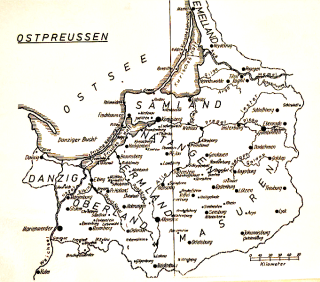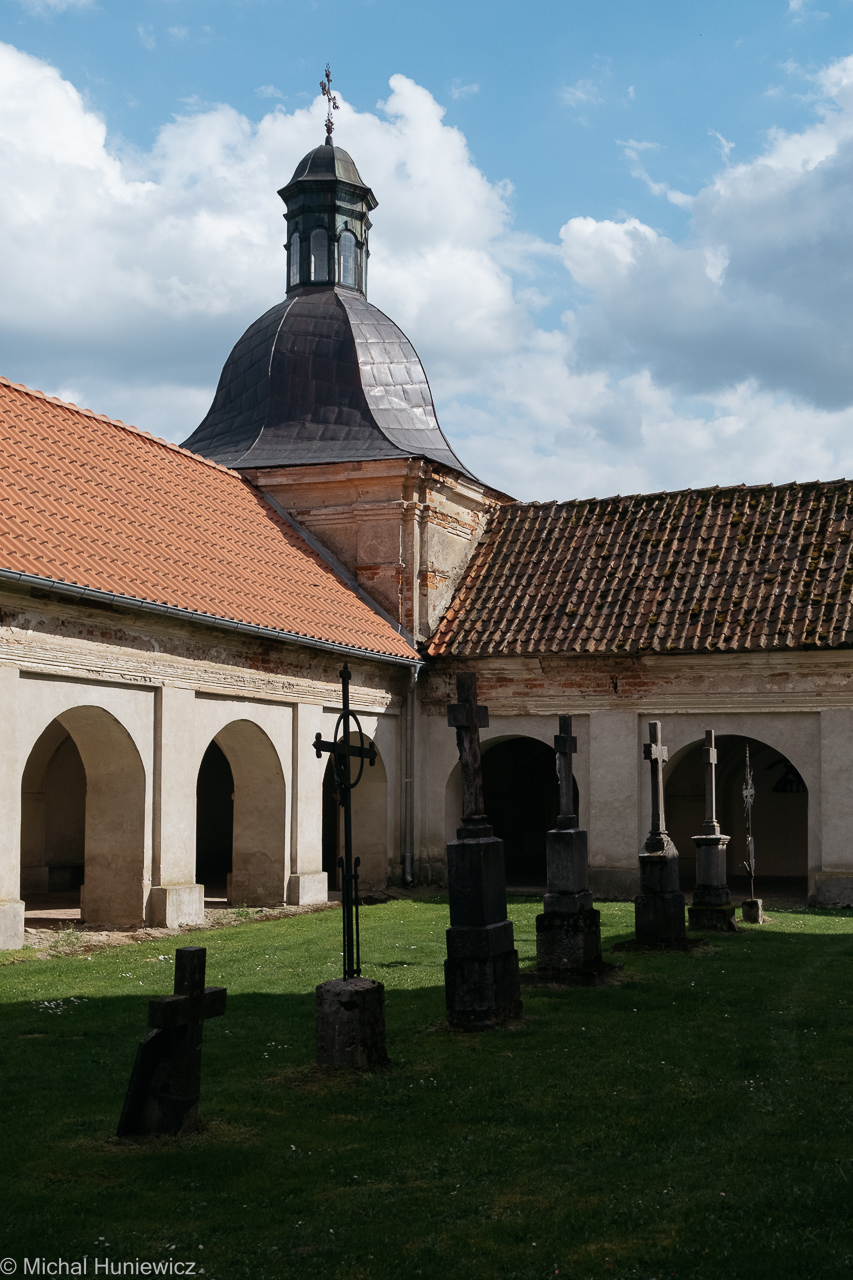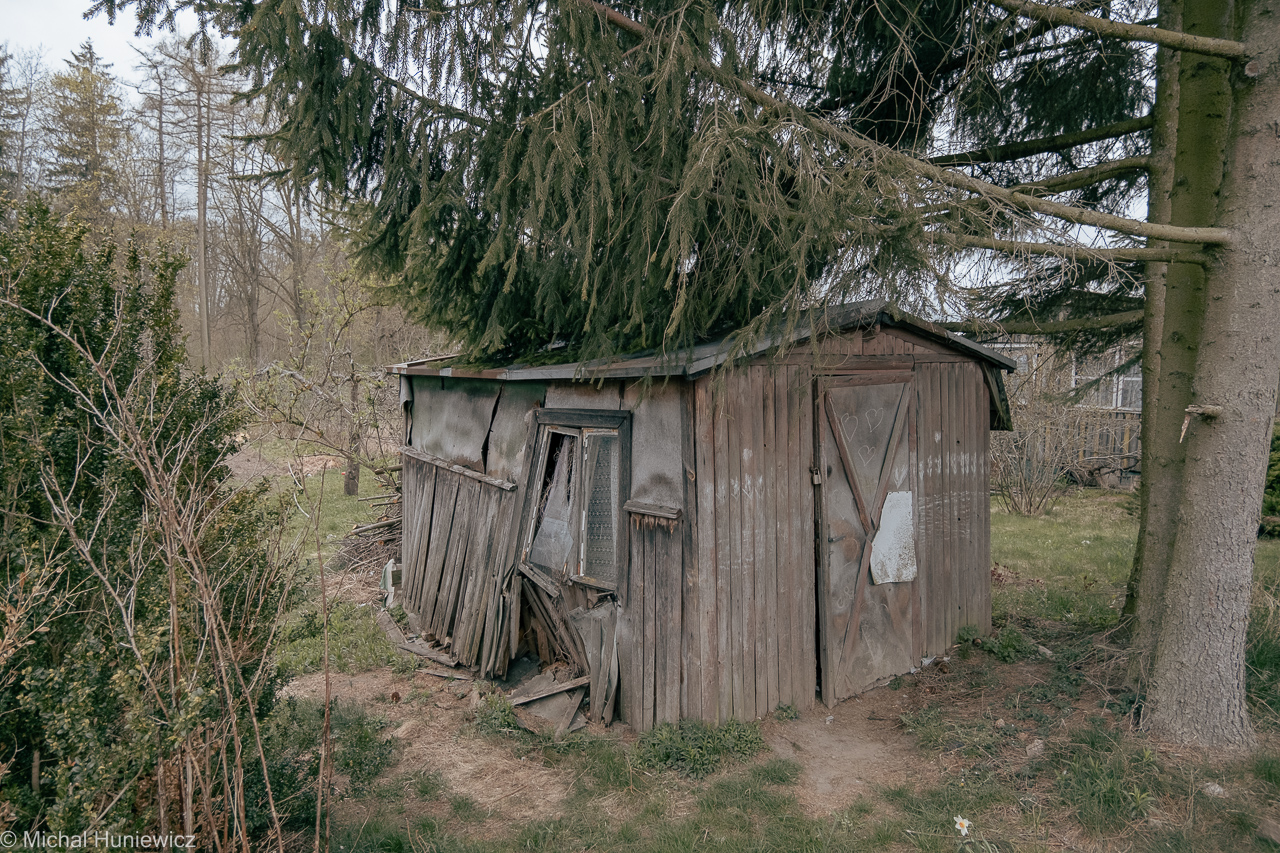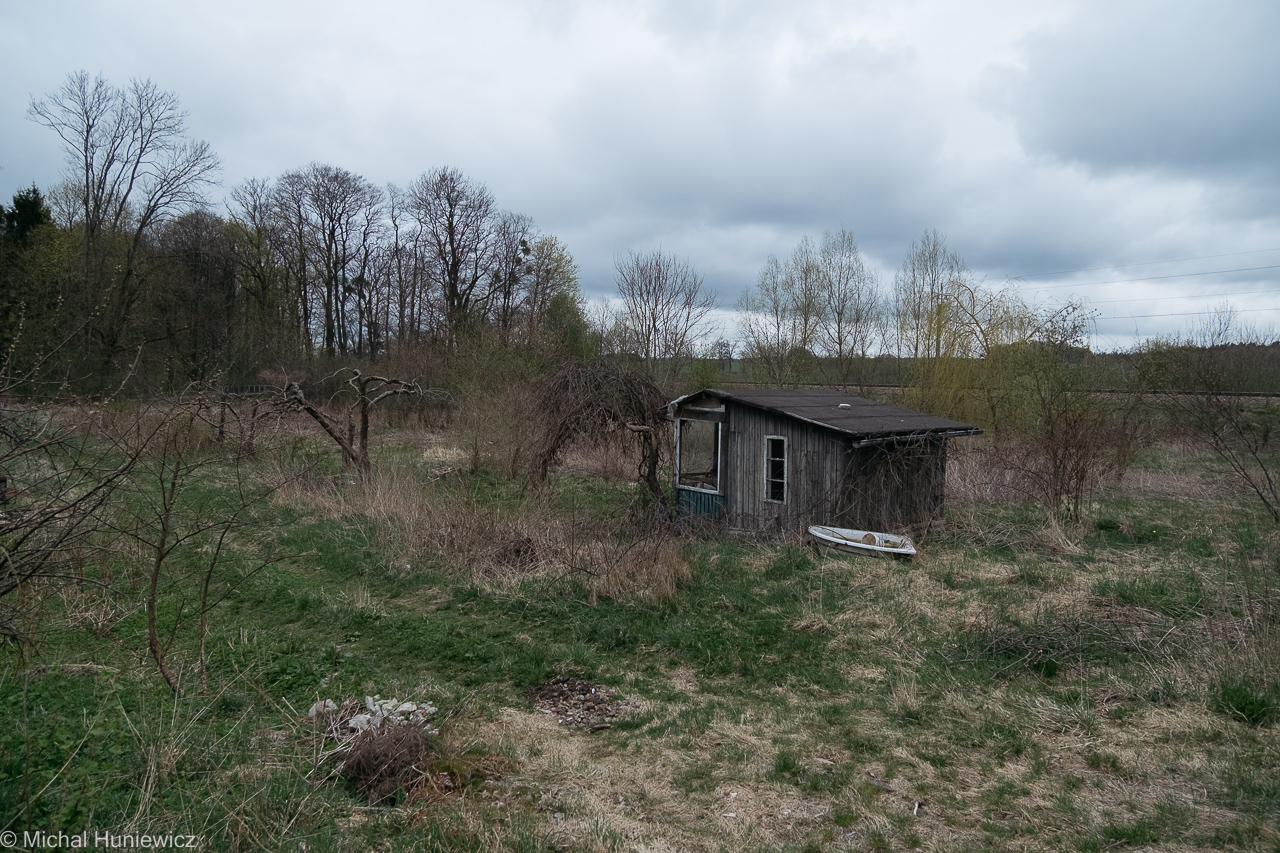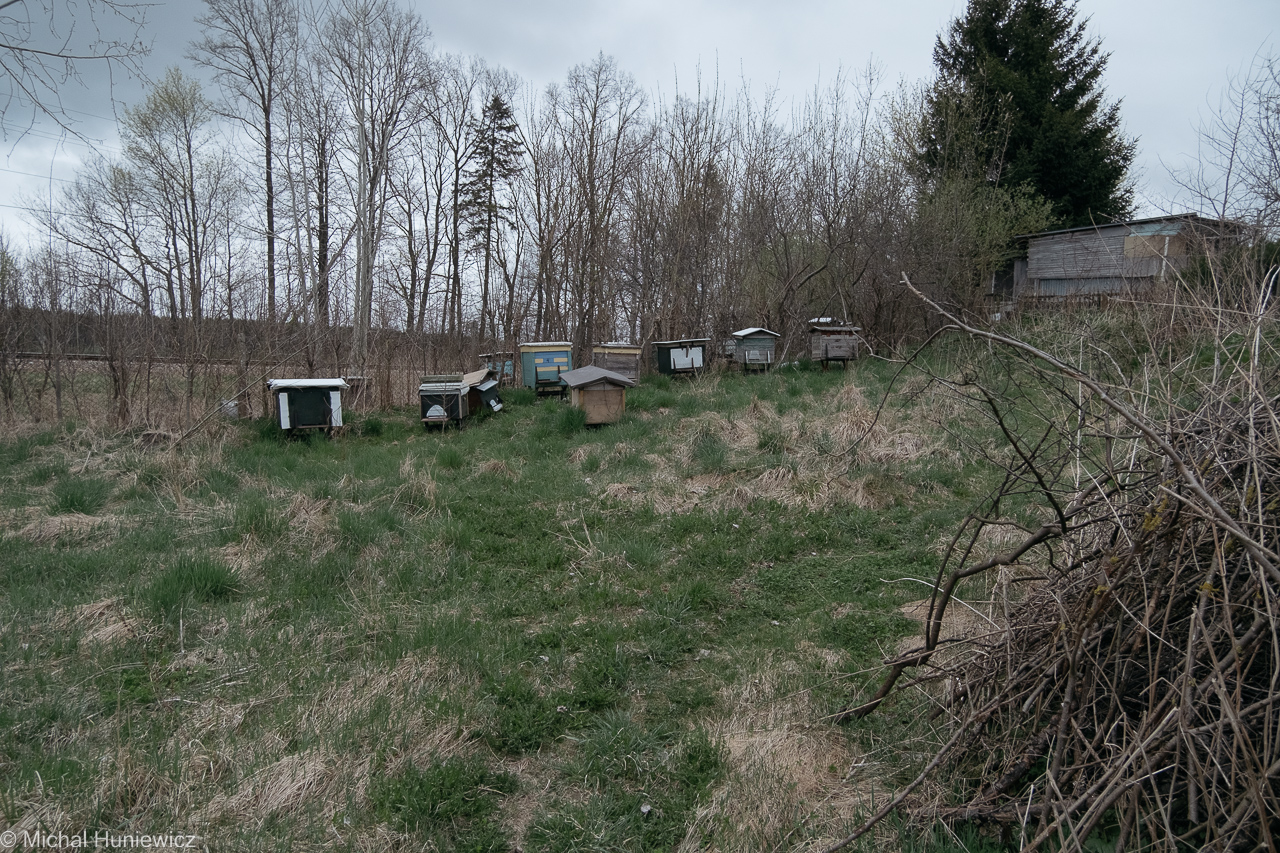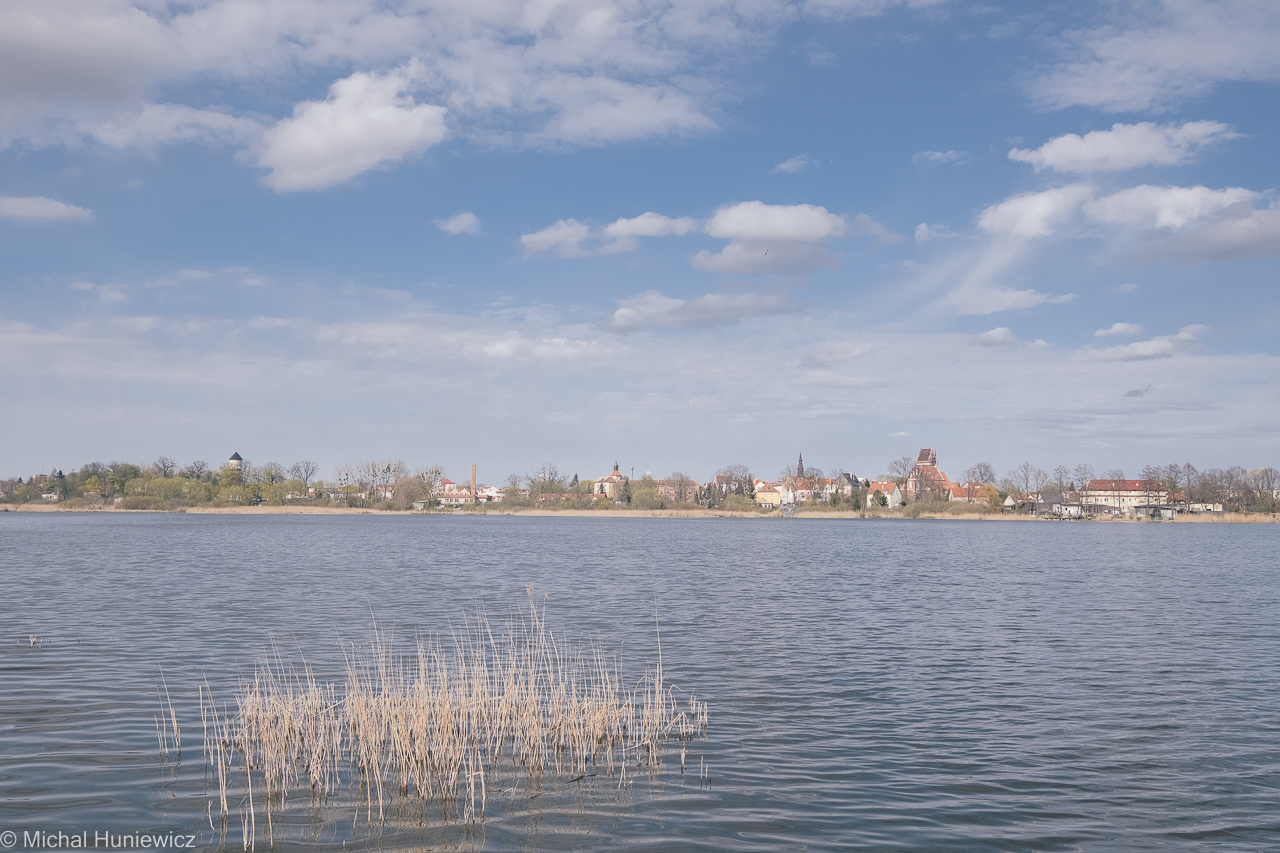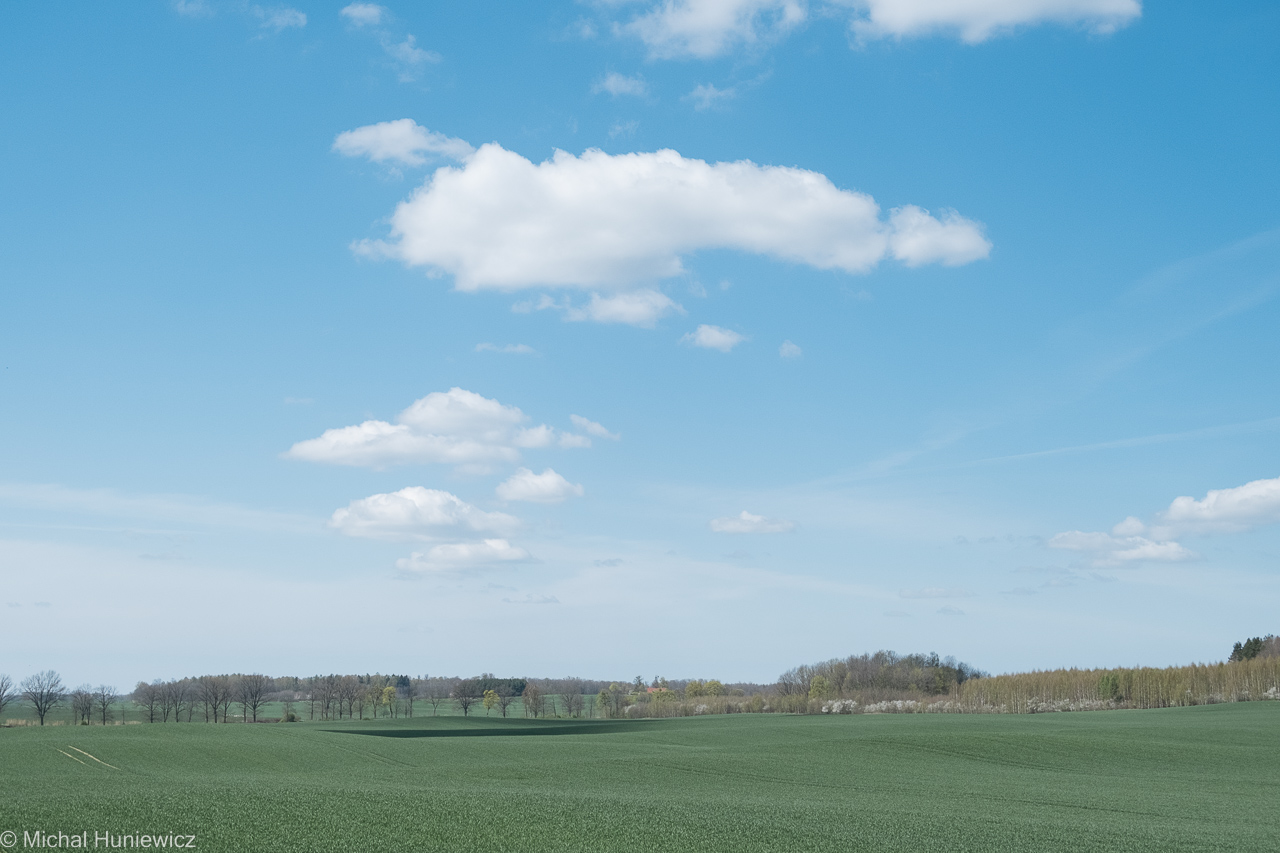Oberland Photography - M1key - Michal Huniewicz

The landscape belongs to no one; or if it does, it belongs to those who can love without possessing -- Marion Gräfin Dönhoff. [1]
Welcome to Oberland
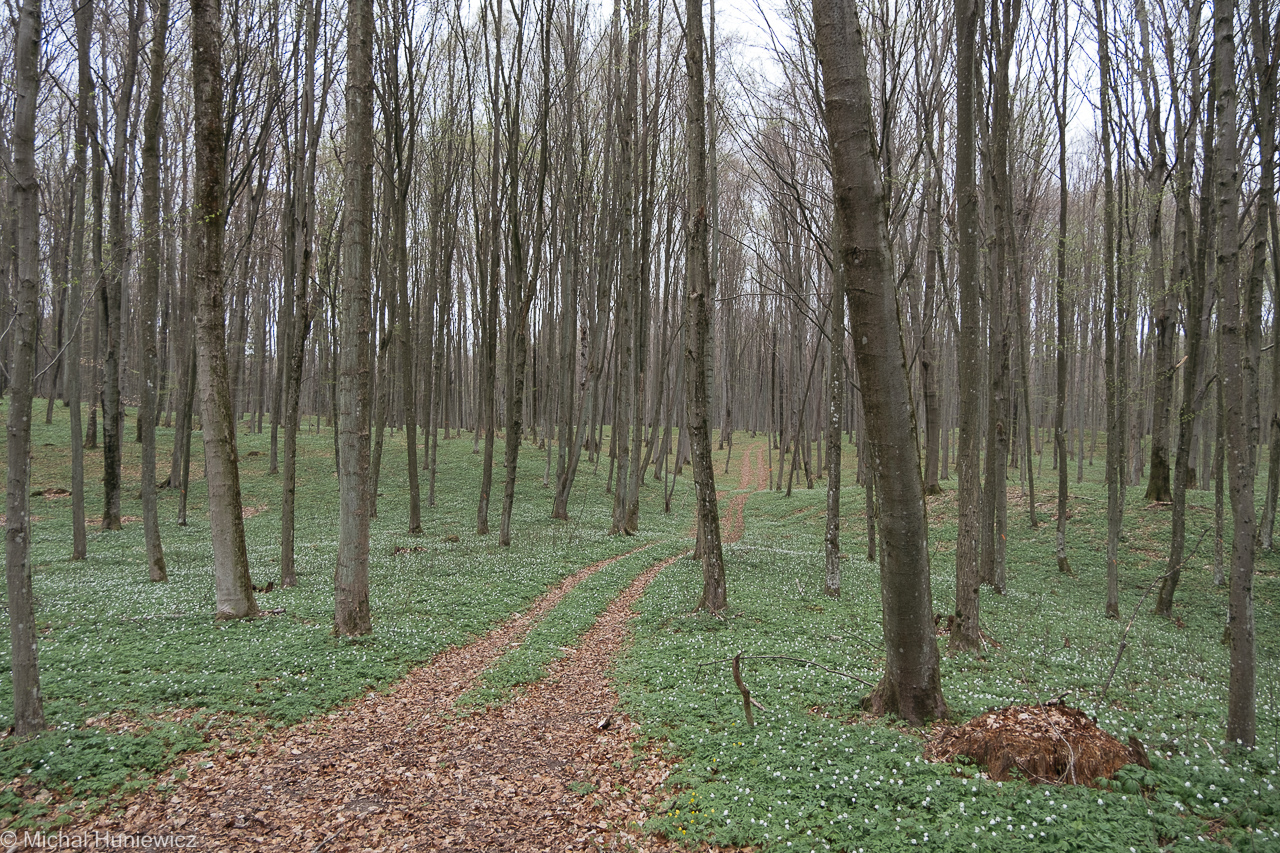
Inspired by various photographers, including some Magnum heavyweights, I returned to my old stomping grounds - to photograph the ordinary. But also to explore the troubled past and complicated heritage of the land once known as Oberland (Upper Prussia), if only briefly and superficially. Is understanding where we come from key to understanding who we are?
ISO 160, 15mm, f/3.5, 1/150s.
Devil's Pond
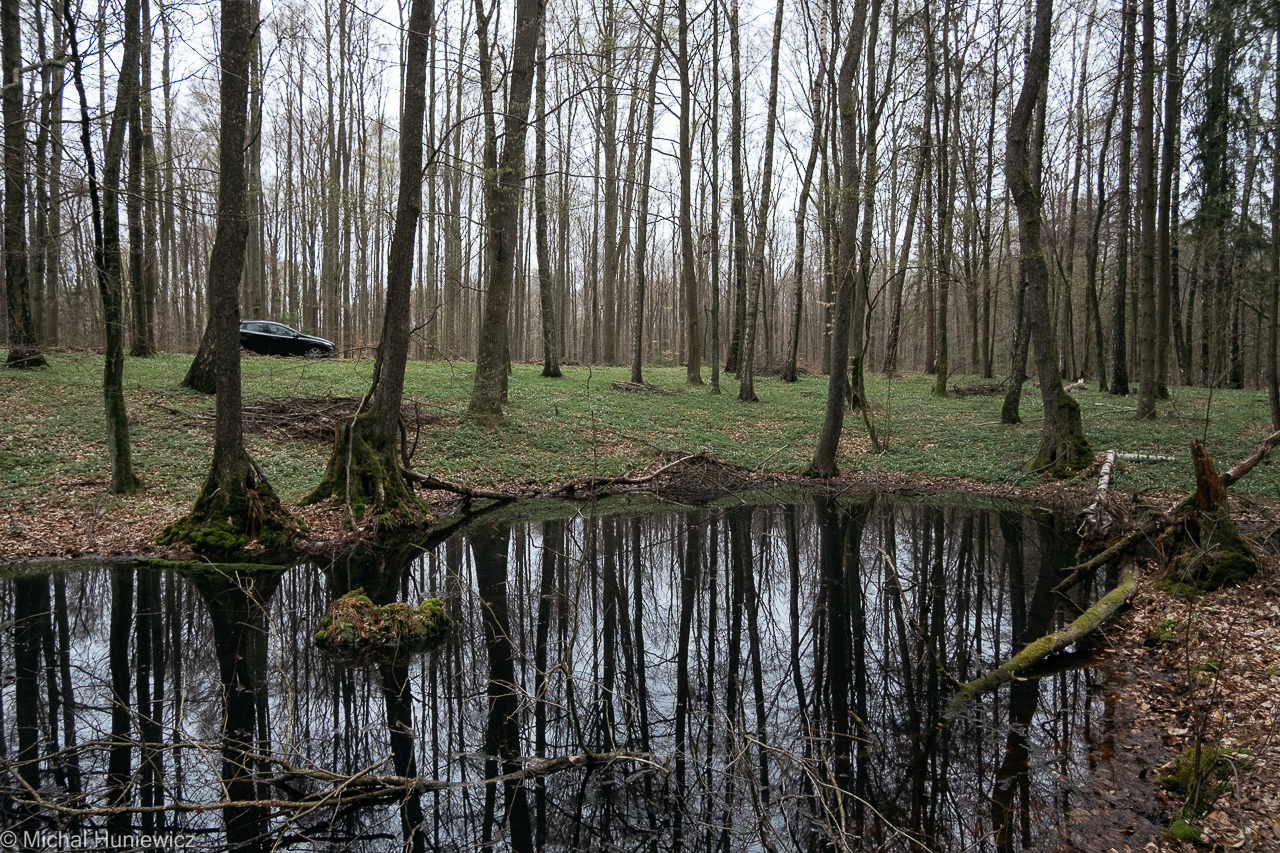
It wasn't the first time for me to go back, although it had been a couple of years since I went previously. This trip was facilitated by my dad, and it was interesting to pick his brains on the local lore, and appreciate the mastery of the Polish language he occasionally displayed. As an example, he called this random waterhole in the woods a "devil's pond" (czarcie jeziorko), and we just had to stop here. We were immediately enveloped by a swampy fragrance, with damp moss and decayed leaves adding to the smell, and with a hint of resin. Could whiskey be made here, I wondered, and would it capture the experience of the senses? It was too early in the year for mosquitoes, and birds were singing their songs.
ISO 640, 15mm, f/6.4, 1/200s.
Wood
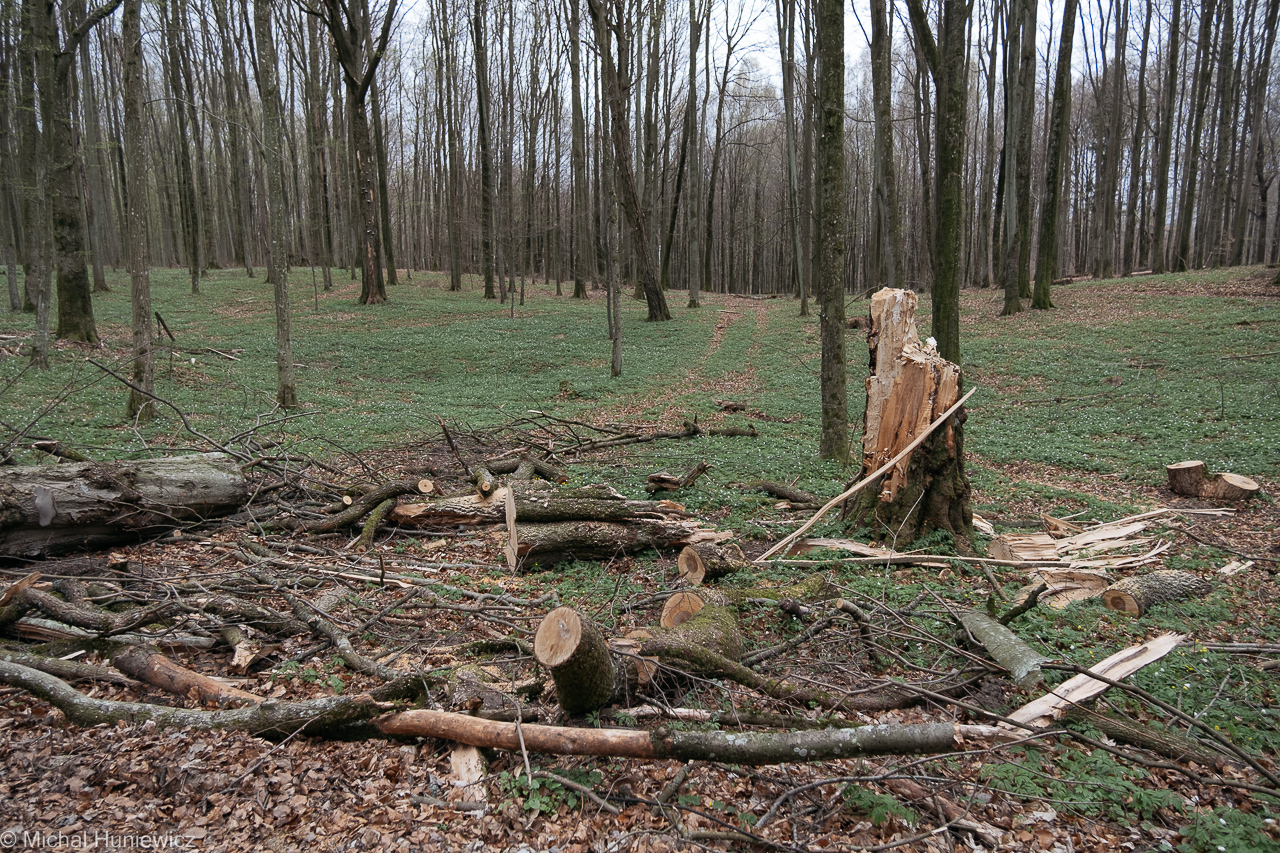
But the bliss of the emerald forest was interrupted by the harsh sound of a chainsaw just a few hundred metres away. Poland has been notorious at exploiting its forests which is also evident if you analyse satellite imagery from the area, and how it's changed over the years. Trucks with fallen trees are an omnipresent sight, too. It's merely a tree factory to them, my dad said.
ISO 160, 15mm, f/3.5, 1/200s.
Names No One Speaks Any More
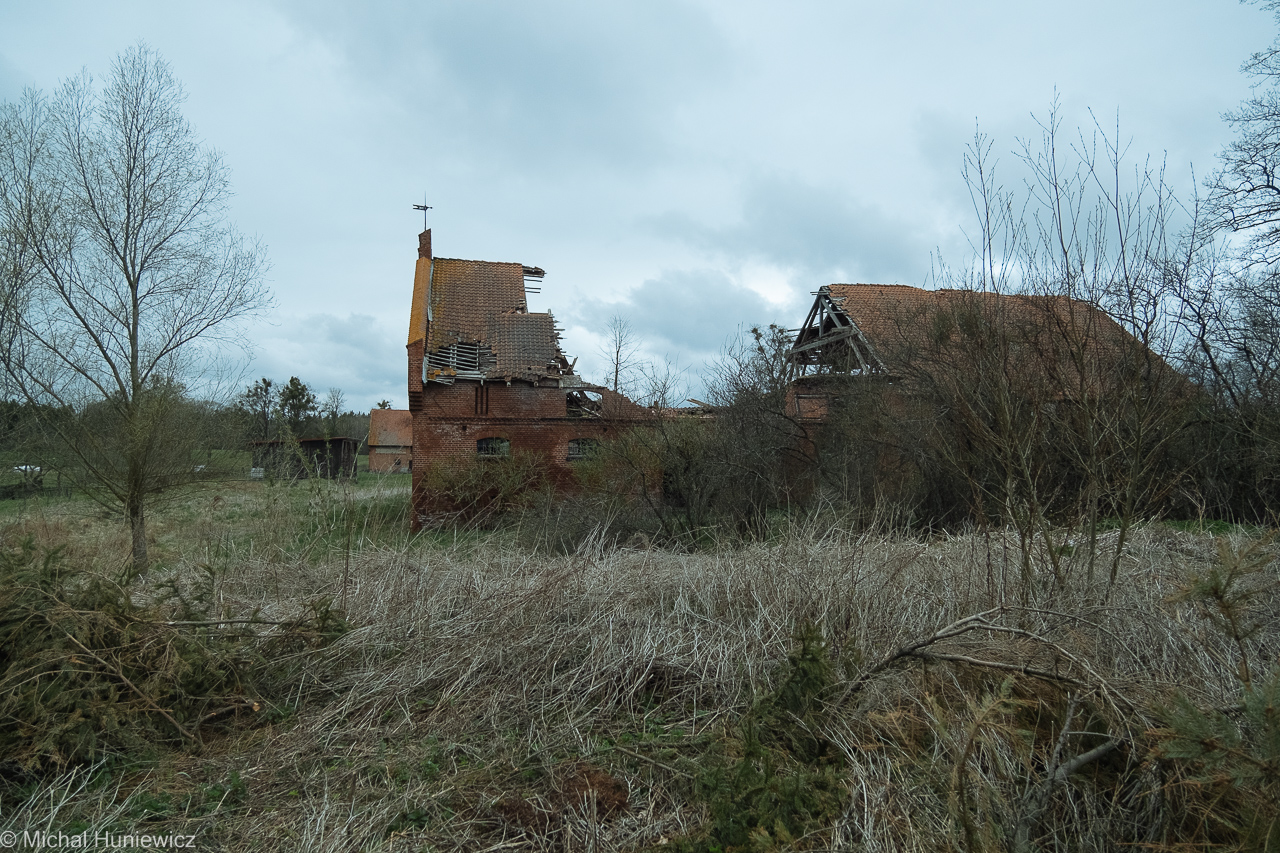
And so, the forests change, but then so do human settlements. Even a quick glance at old nineteenth century maps (such as Kreis Mohrungen) reveals a surprising number of villages that are now in the state of decay, like this one (Zalesie, once known as Pfalsdorf), or have entirely disappeared, for example Friedrichshof or Baarwiese [2]. Their disappearance is usually linked to the departure of the German inhabitants around 1944/45, as the Soviets' advance became inevitable and imminent.
As an example, Baarwiese seems to have taken several decades to fizzle out of existence, from a hamlet to a settlement to a lake and finally into oblivion, managing to acquire a Polish name somewhere along the way - Barwiny - before being absorbed by the woods.
As an example, Baarwiese seems to have taken several decades to fizzle out of existence, from a hamlet to a settlement to a lake and finally into oblivion, managing to acquire a Polish name somewhere along the way - Barwiny - before being absorbed by the woods.
ISO 640, 15mm, f/3.5, 1/4000s.
Bogaczewo
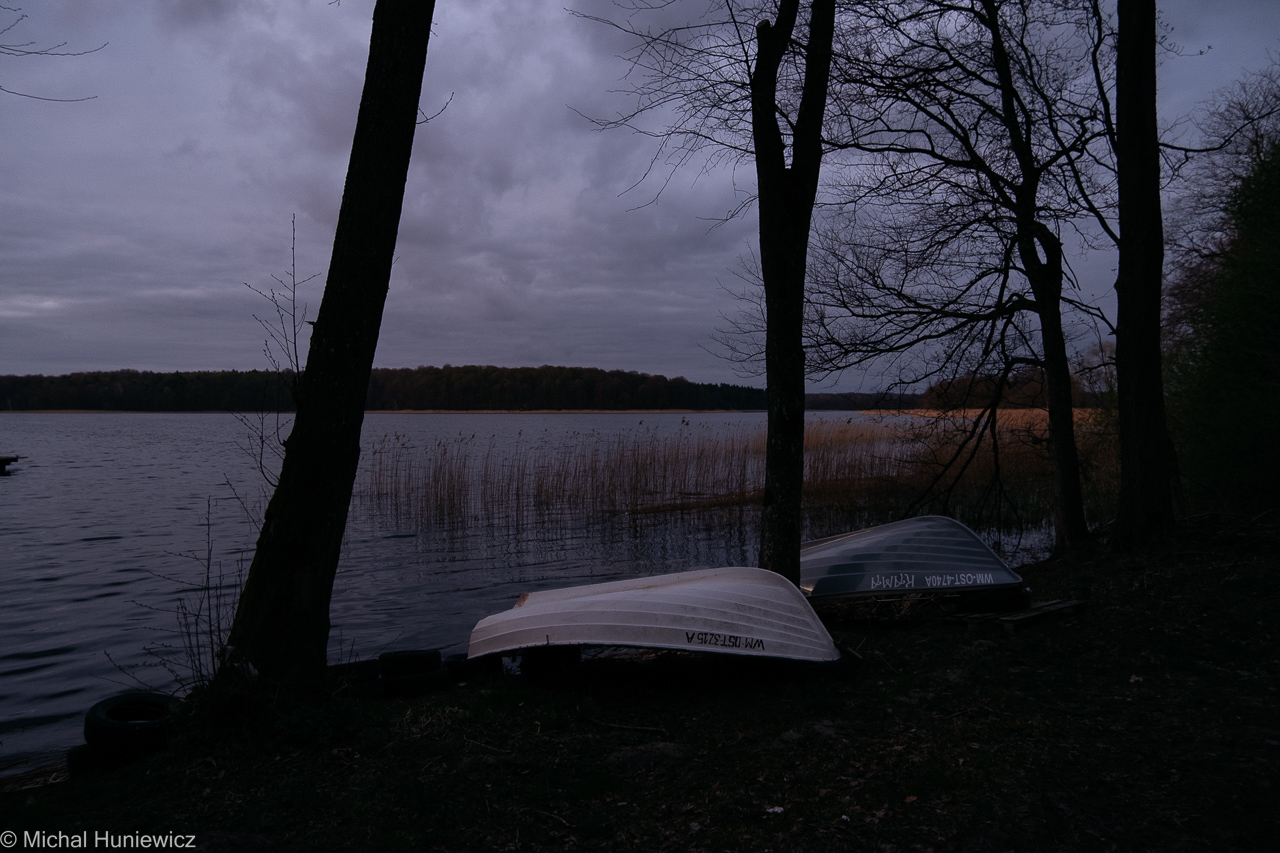
Known as the Land of a Thousand Lakes, this part of Poland (and previously, of Prussia) has always attracted crowds during the tourist season that we were careful to avoid, arriving just before the start of the season. I rented a wooden cabin that would become our headquarters for the duration of the stay, housing also my camera, laptop, physical maps, and books about the region.
ISO 800, 15mm, f/3.5, 1/25s.
Ostróda
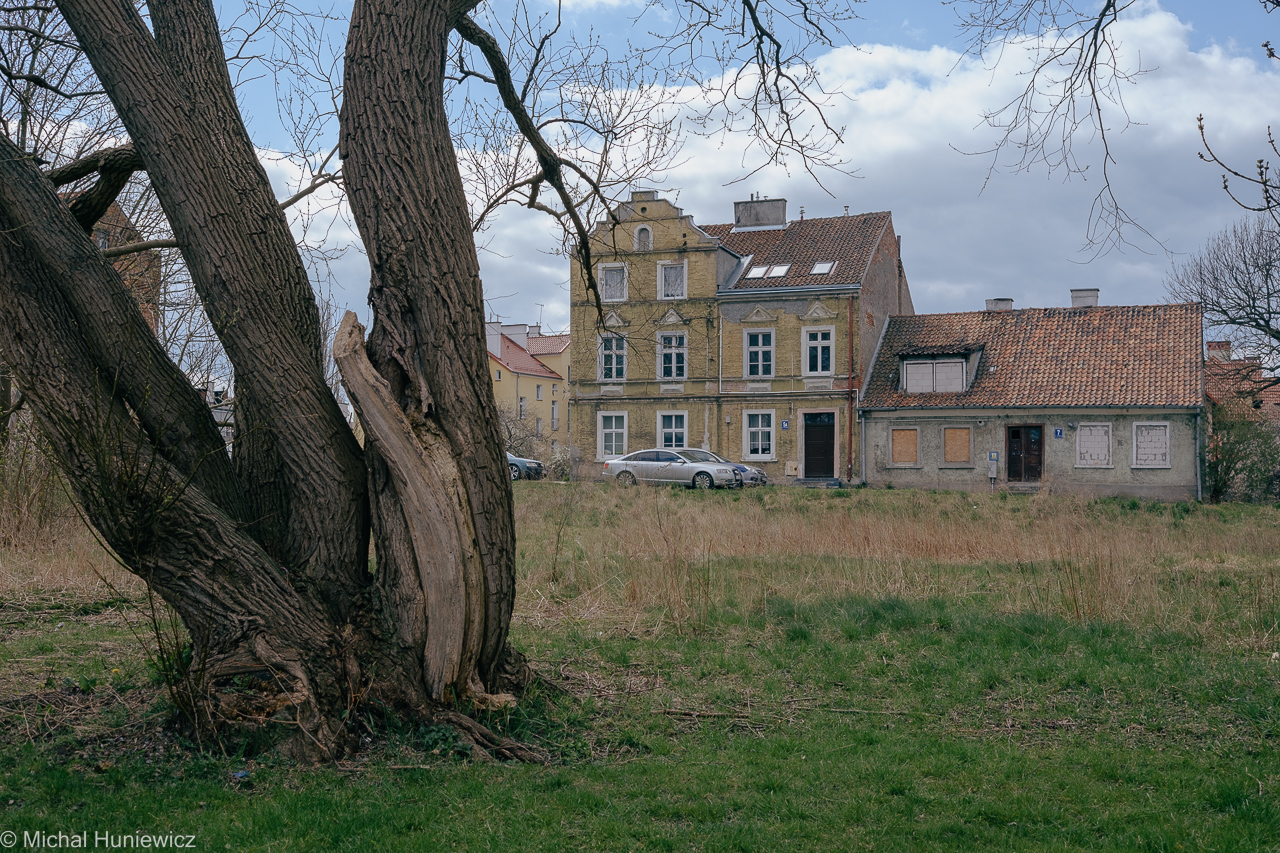
The town of Ostróda (Osterode) has done rather well for itself since becoming the seat of the Ostróda County (prefecture). Situated directly by the lake, it was pleasant to visit. A decent restaurant sits right by the lake. Here, I was interested in capturing the pre-Second World War buildings.
ISO 160, 27mm, f/6.4, 1/340s.
Morąg
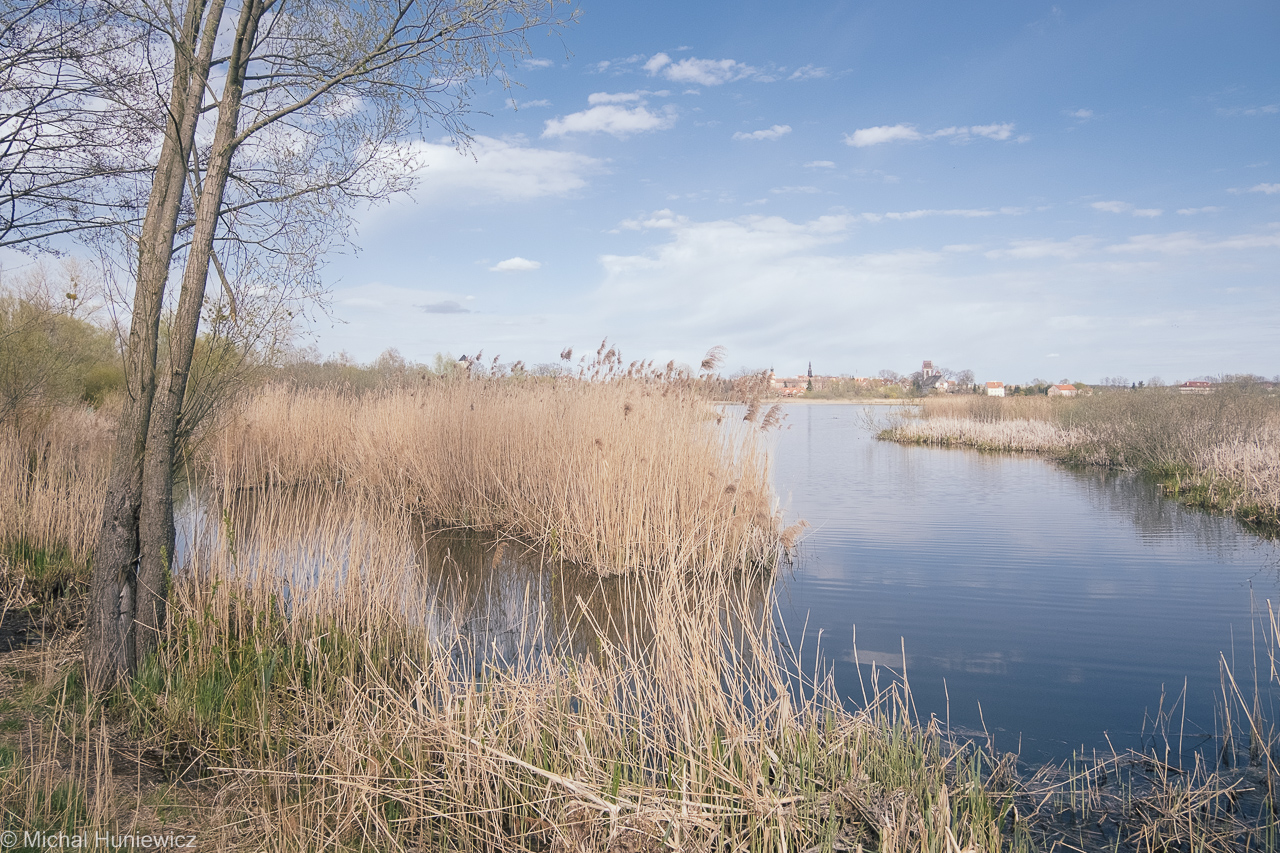
But the town of Morąg (Mohrungen) was denied its own county, and has been stagnating ever since. We walked along the so called Morąg Marsh, a demoted lake, these days a natural reserve for many species of birds, with picturesque sights of the town's mediaeval skyline.
ISO 640, 15mm, f/5.6, 1/2400s.
Orneta
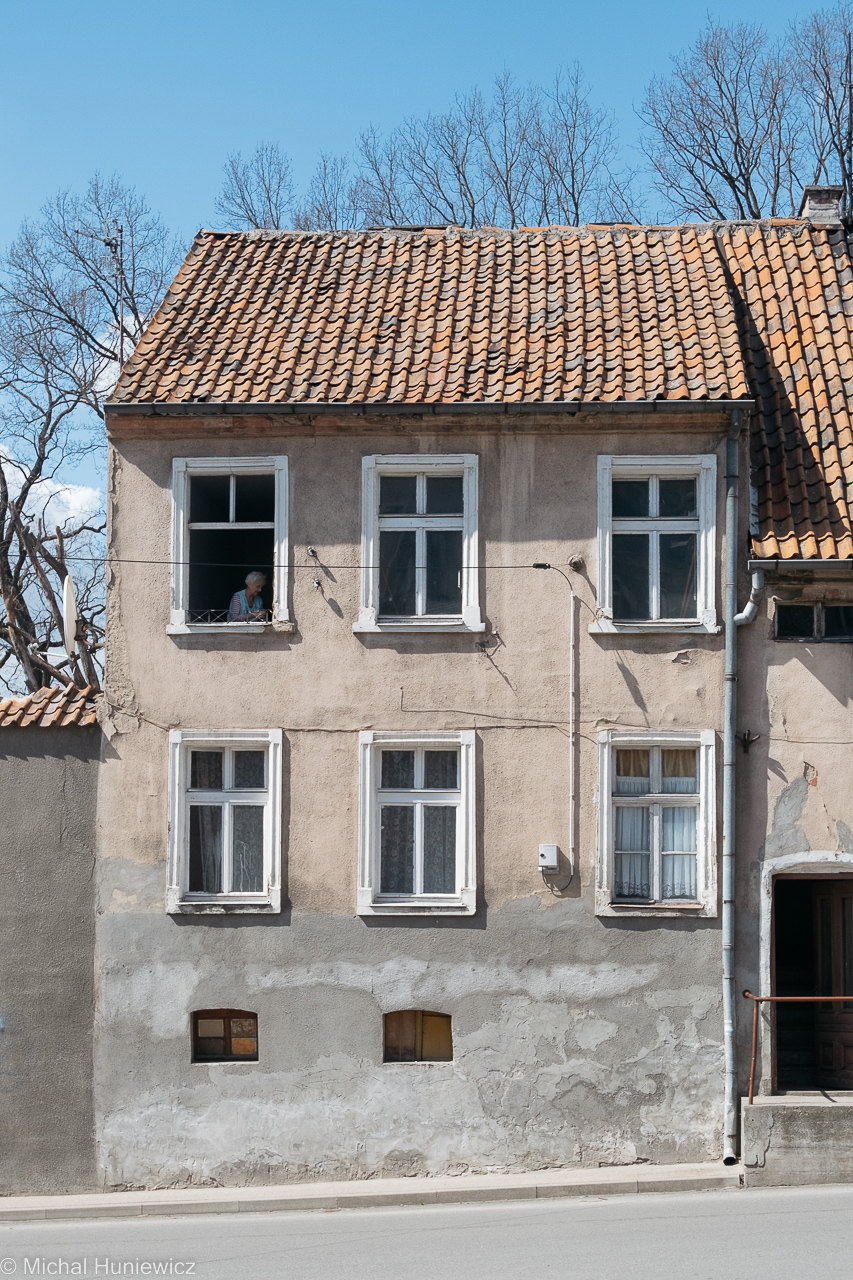
And yet, not becoming a county town did not stop Orneta (Wormditt) from doing well. The town and its market square (not pictured here) was one of the highlights of the trip. Orneta follows the Kulm law blueprint for a town, being a modification of Magdeburg laws. [3] While I am not entirely aware of what that means, I grew up in this sort of surroundings, that is a town square with a town hall in the middle, and a church to the side. An instant sense of familiarity.
ISO 640, 36mm, f/5.2, 1/2500s.
Buildings of Orneta
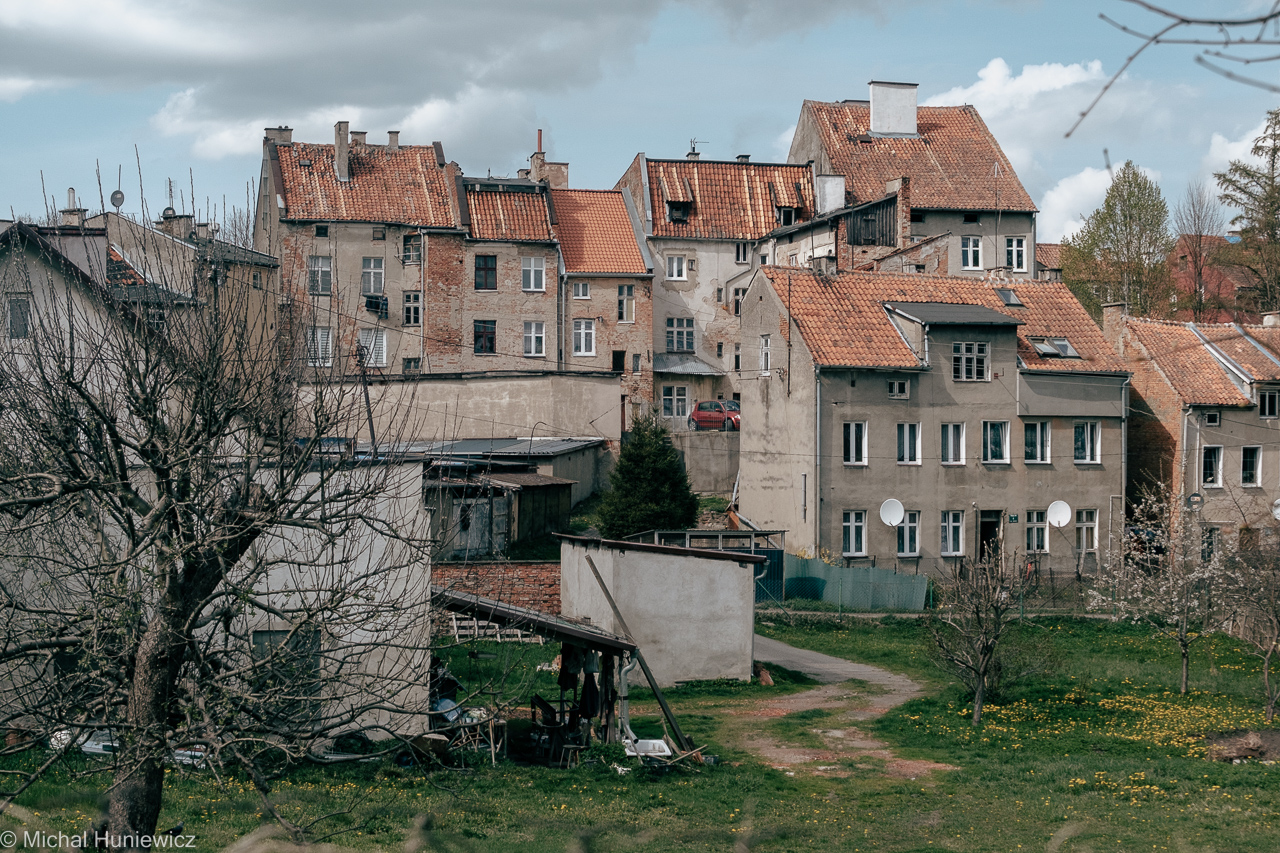
The market square was full of life with scents of exotic spices in the air as if you were in the Grand Bazaar of Istanbul, almost. A man from the East was selling kebabs, the sky was blue, there were Ukrainian flags flying in a display of solidarity, and those of the local wyrm (in the coat of arms; see the German name of the town), too. It was beautiful.
ISO 640, 45mm, f/5.6, 1/3000s.
Prussian Road
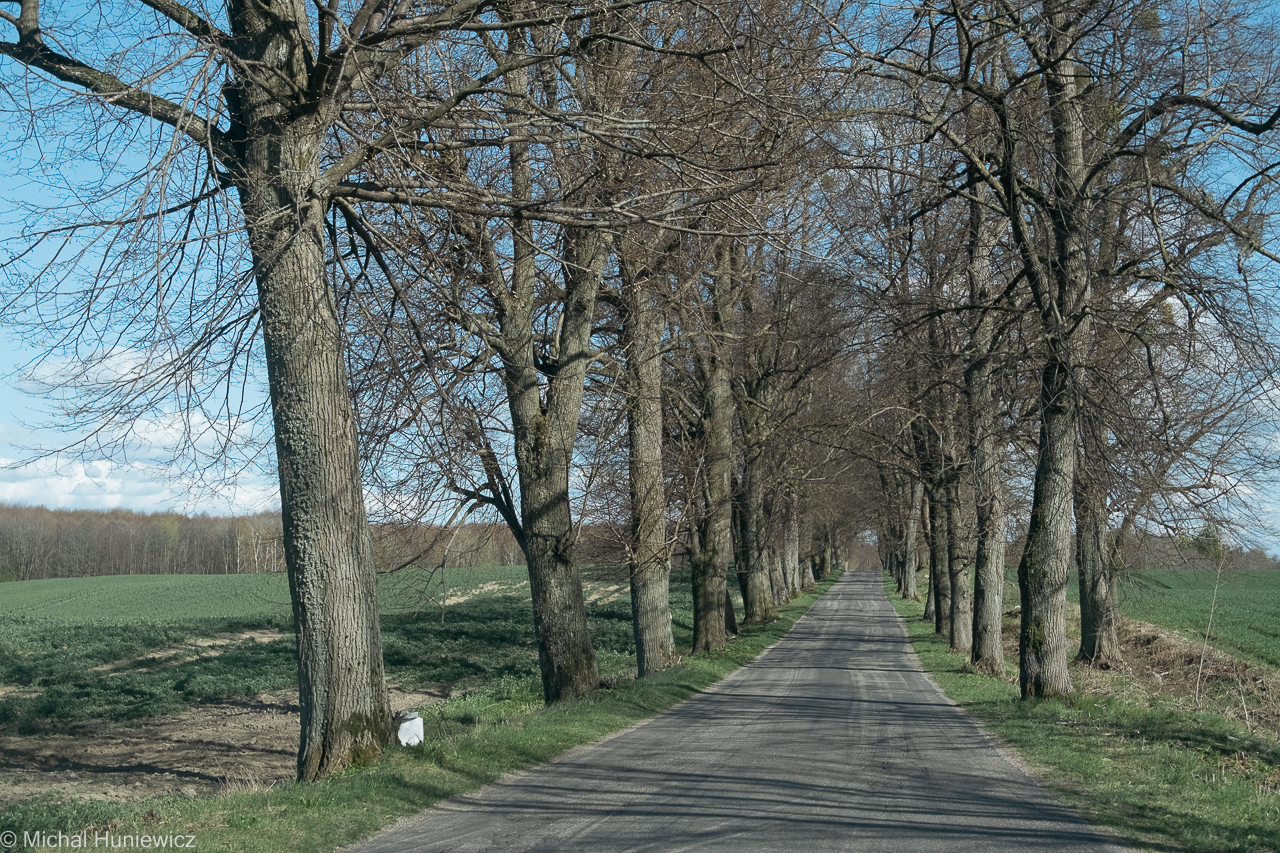
The trademark Prussian road with trees planted alongside has also been a victim of the need to cut trees down, this time in the name of road safety, driving more slowly apparently not considered.
Photo taken on the road from Markowo (Reichertswalde), spared from deforestation for the time being.
Photo taken on the road from Markowo (Reichertswalde), spared from deforestation for the time being.
ISO 640, 33mm, f/4.9, 1/2000s.
Markowo
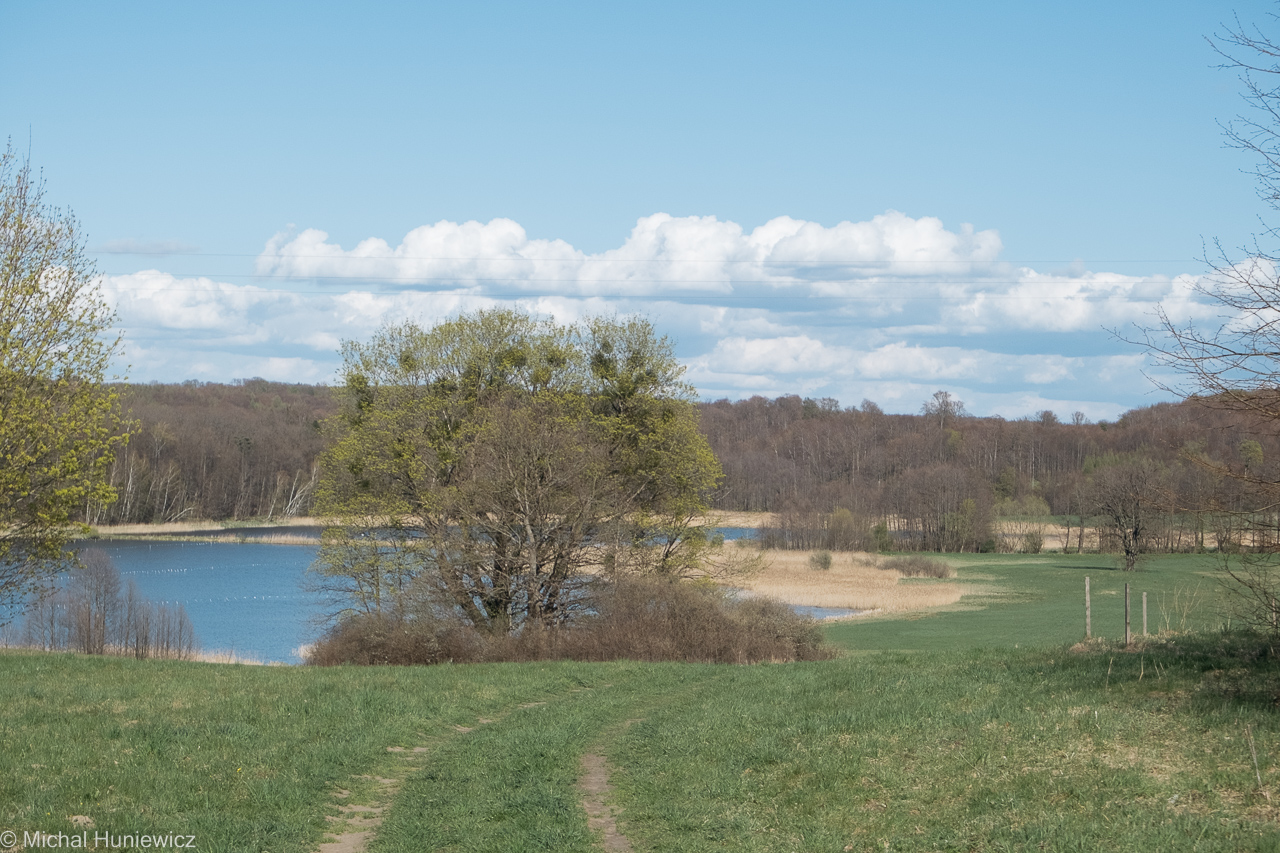
We then began our search for the Pseudo Megalithic Cemetery of the Zu Dohna family, a unique object of historical significance. To aid us, we had a map, drawn by a child but surprisingly helpful (the map can be obtained at a nearby hotel).
ISO 640, 45mm, f/5.6, 1/3200s.
Pseudo Megalithic Cemetery of the Zu Dohna
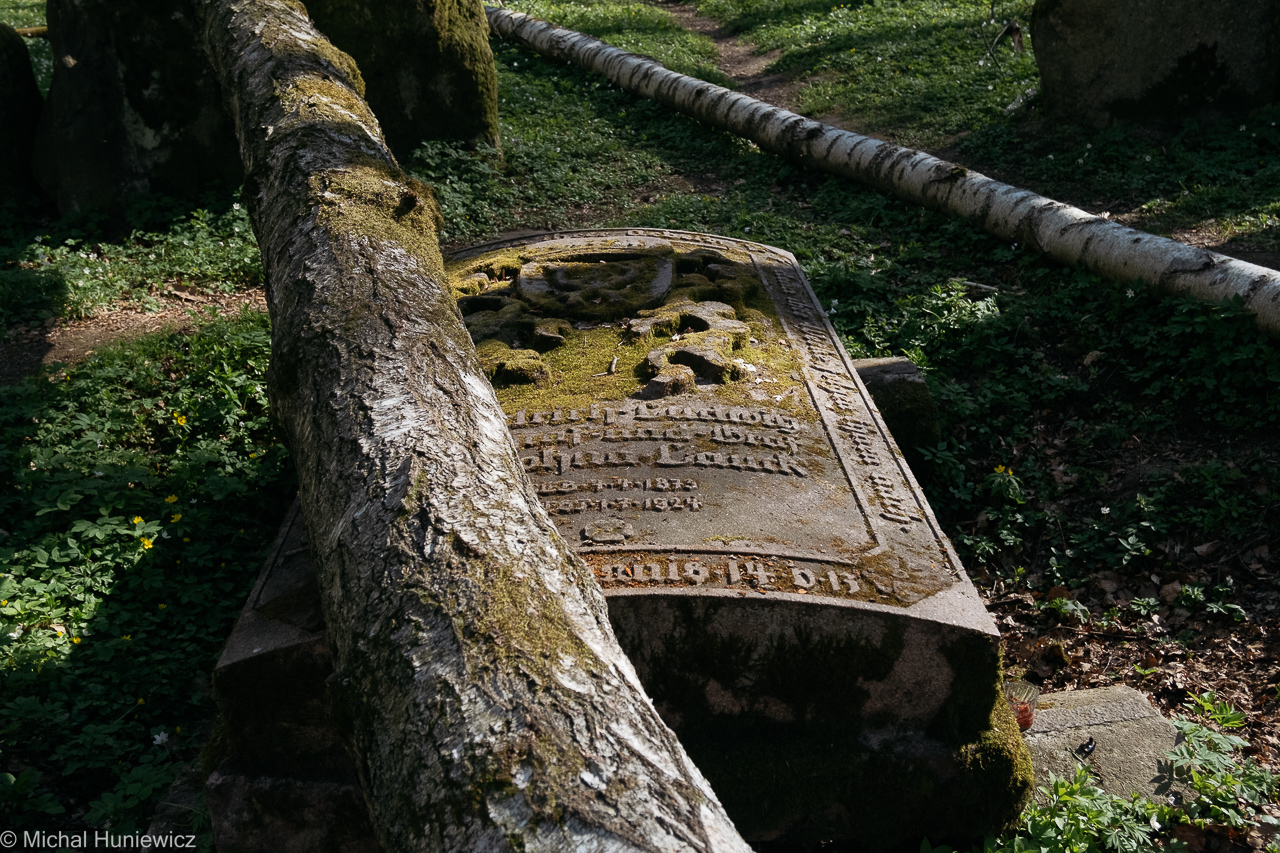
Thus, we located this place, an attempt of the German aristocrats to combine Christianity with pagan Germanic beliefs, all under the umbrella of Nazism. Here, we find a swastika, and a stone that quotes both the Bible and Adolf Hitler. Not your typical combo. The Prussians from Oberland generally (although not universally) flirted with the Nazis, hoping for political and economical gains. After the Second World War, they were keen to distance themselves from that episode. But the memory remains!
ISO 640, 23mm, f/5.6, 1/850s.
Krosno
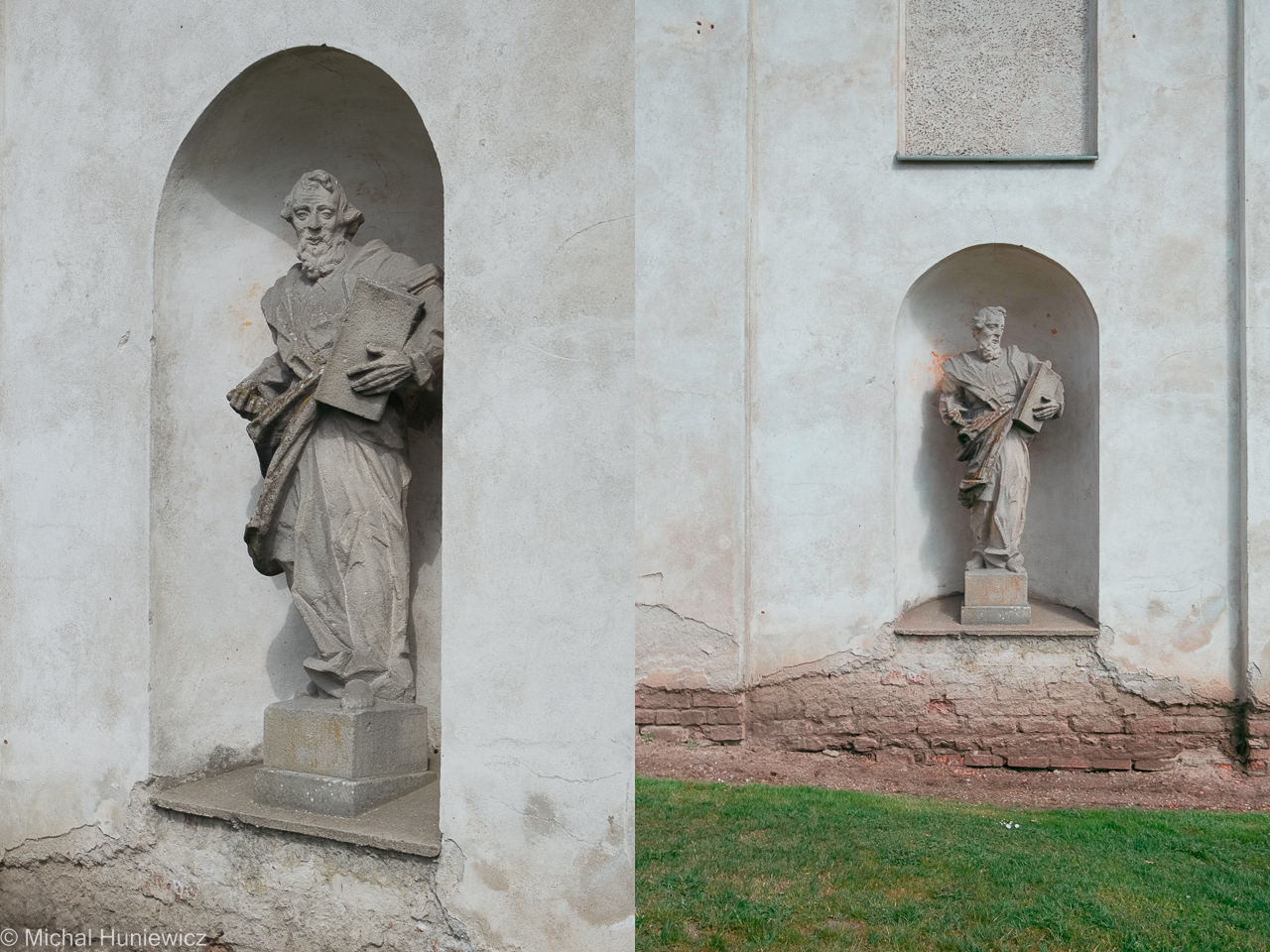
Moving on to a tiny place called Krosno. This is a baroque commercial enterprise meant to attract pilgrims, complete with a local miracle. I understand it failed, as it never matched the popularity of a nearby holy place called Święta Lipka. Too much competition in the sacred sphere.
ISO 640, 43mm, f/5.6, 1/2700s.
Emptiness
Graveyard
To Dobrocin
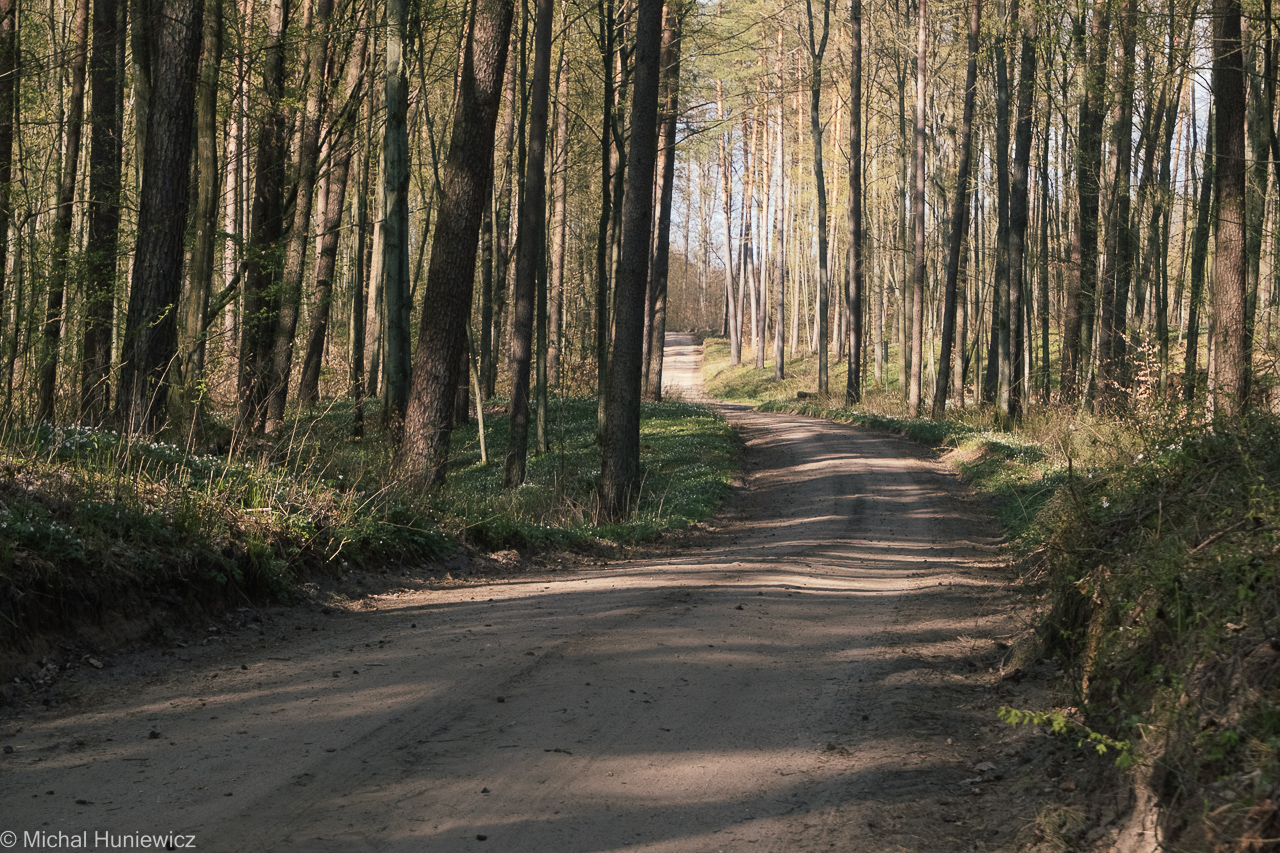
For me, traditionally, the biggest deal was to visit the village where I grew up.
ISO 640, 45mm, f/5.6, 1/800s.
Fields of Dobrocin

So much of my formative years as well as early adolescence took place in those fields, where bored out of our minds we let our imagination run wild. Every corner appeared to have had adventures to offer. These days, I could photograph the fields endlessly.
The dark tree in the distance on the right is where one of my friends climbed the branches, and we tried to make him laugh to see if he'd fall. No cruelty is foreign to children!
The dark tree in the distance on the right is where one of my friends climbed the branches, and we tried to make him laugh to see if he'd fall. No cruelty is foreign to children!
ISO 640, 31mm, f/4.7, 1/3800s.
Redemption of the Ordinary
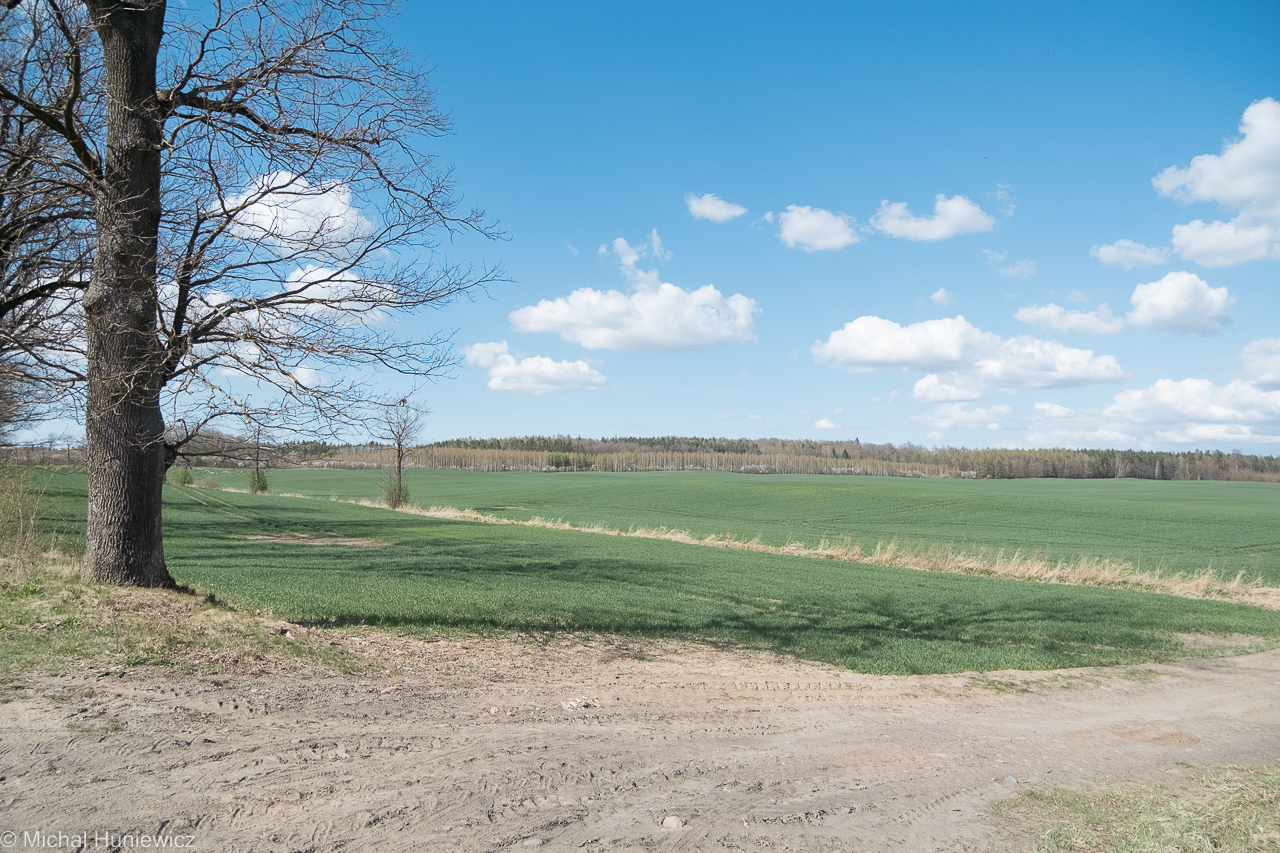
This is the same field seen from the other side, and a nameless river flowing south.
[...] down this road we've been so many times
The grass was greener
The light was brighter
The taste was sweeter
The nights of wonder
With friends surrounded
The dawn mist glowing
The water flowing
The endless river
Forever and ever
[...] down this road we've been so many times
The grass was greener
The light was brighter
The taste was sweeter
The nights of wonder
With friends surrounded
The dawn mist glowing
The water flowing
The endless river
Forever and ever
ISO 640, 15mm, f/4.0, 1/4000s.
Entropy
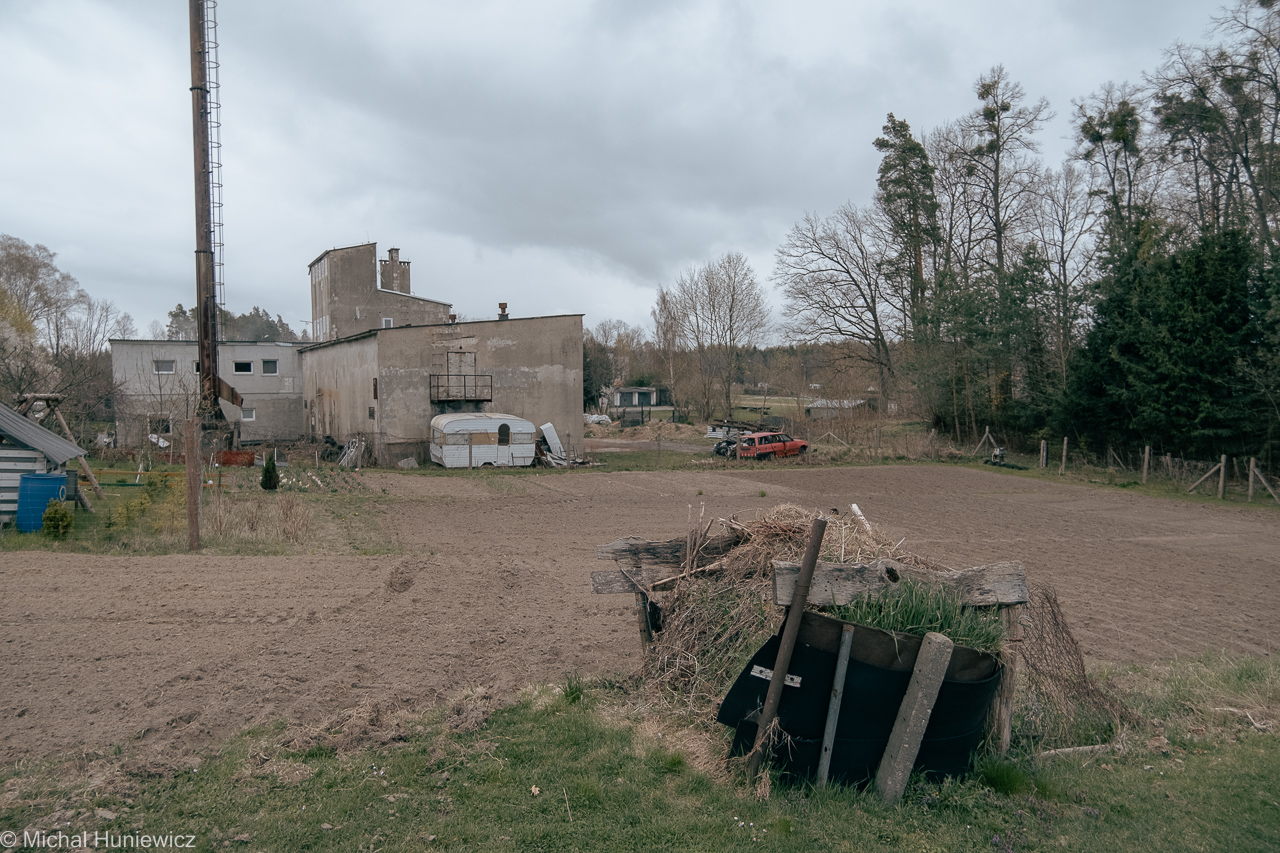
(Pink Floyd lyrics above)
My village has changed a bit, decay apparently setting in; the sands of time forever shifting...
My village has changed a bit, decay apparently setting in; the sands of time forever shifting...
ISO 640, 15mm, f/3.5, 1/750s.
Dugout
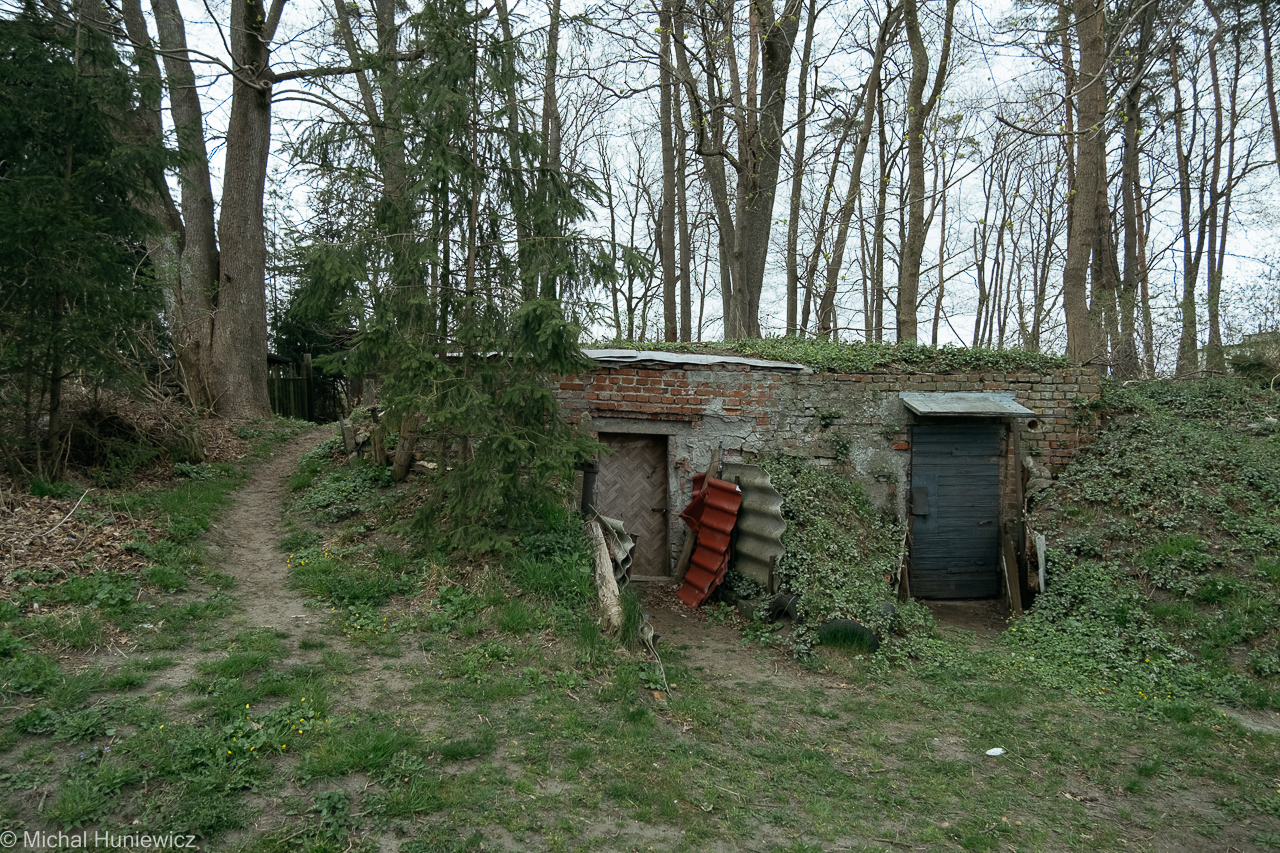
The once amazing places - at least seen through the eyes of a child - have turned down to earth (quite literally even).
ISO 640, 16mm, f/3.5, 1/450s.
Shed
Bathtub
Hives
Core
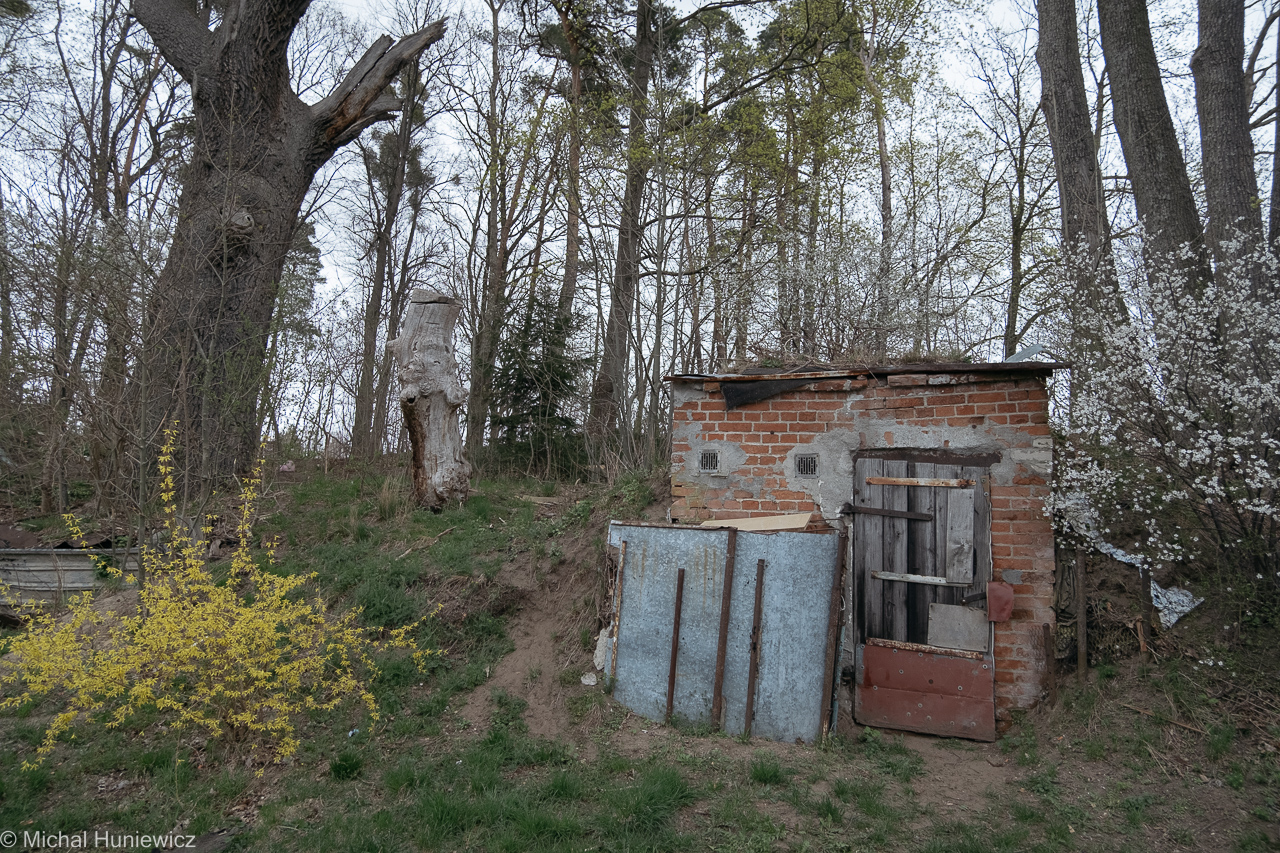
Once one of the most magnificent trees here, it now appears to have burnt a long time ago, leaving only the inner core, like a skeleton. It used to have a hollow that I seem to remember having cobwebs and, as a one-off event, a packet a cigarettes. Was it an oak or a hornbeam, it is hard to tell. Was it even this tree? Why is the hollow so memorable?
ISO 640, 15mm, f/4.0, 1/450s.
Flattened
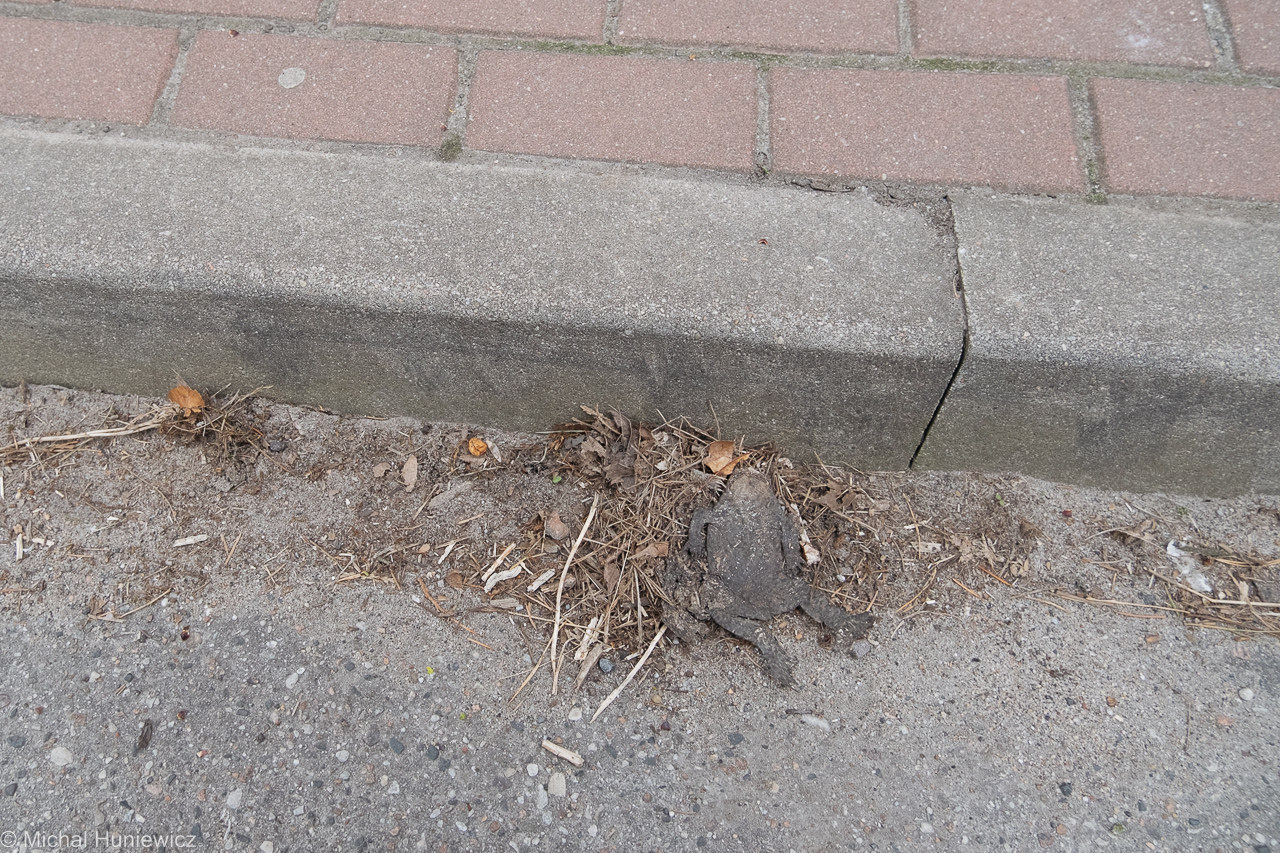
Although I forgot about them for over 20 years, one of the most ubiquitous motifs of my childhood were shrivelled frog skins littering the ground.
ISO 640, 15mm, f/4.5, 1/140s.
A Twentieth Century Cave Painting
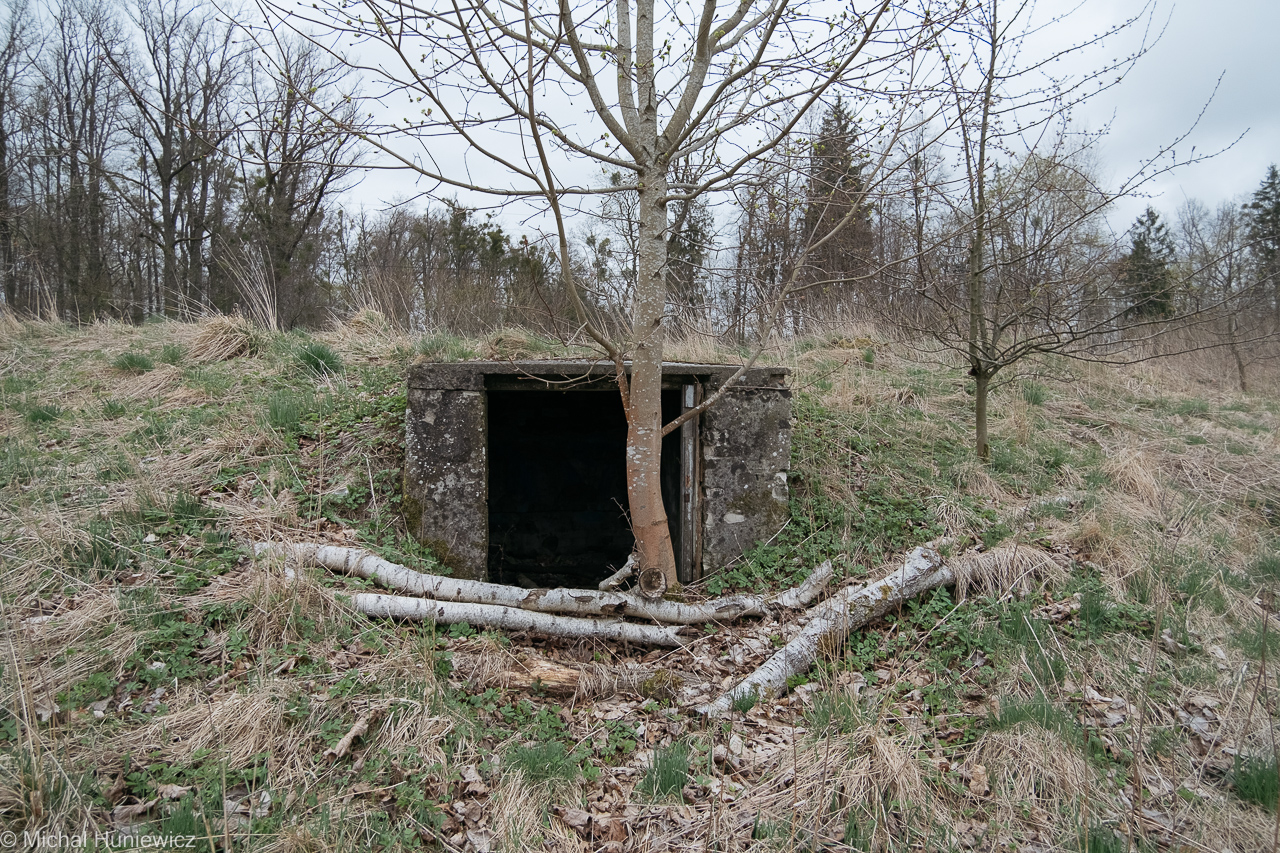
This is the place where, in the more rebellious years, one of us, certainly wasn't me, spray painted a crappy graffiti that was a poor quality copy of another one seen in Morąg. During this trip, I came across the place again, and stepped into the darkness to find the paint still being there on the wall. It'd been so long that it felt like looking at a cave painting, of a suitably lower taste and execution. A twentieth century cave painting.
ISO 640, 15mm, f/3.5, 1/1100s.
Dobrocin Palace

Dobrocin palace, usually photographed from the same angle, my forever inspiration. I guess it's aged reasonably well but I so wish it were properly maintained.
ISO 640, 15mm, f/3.5, 1/850s.
The Door is Always Open
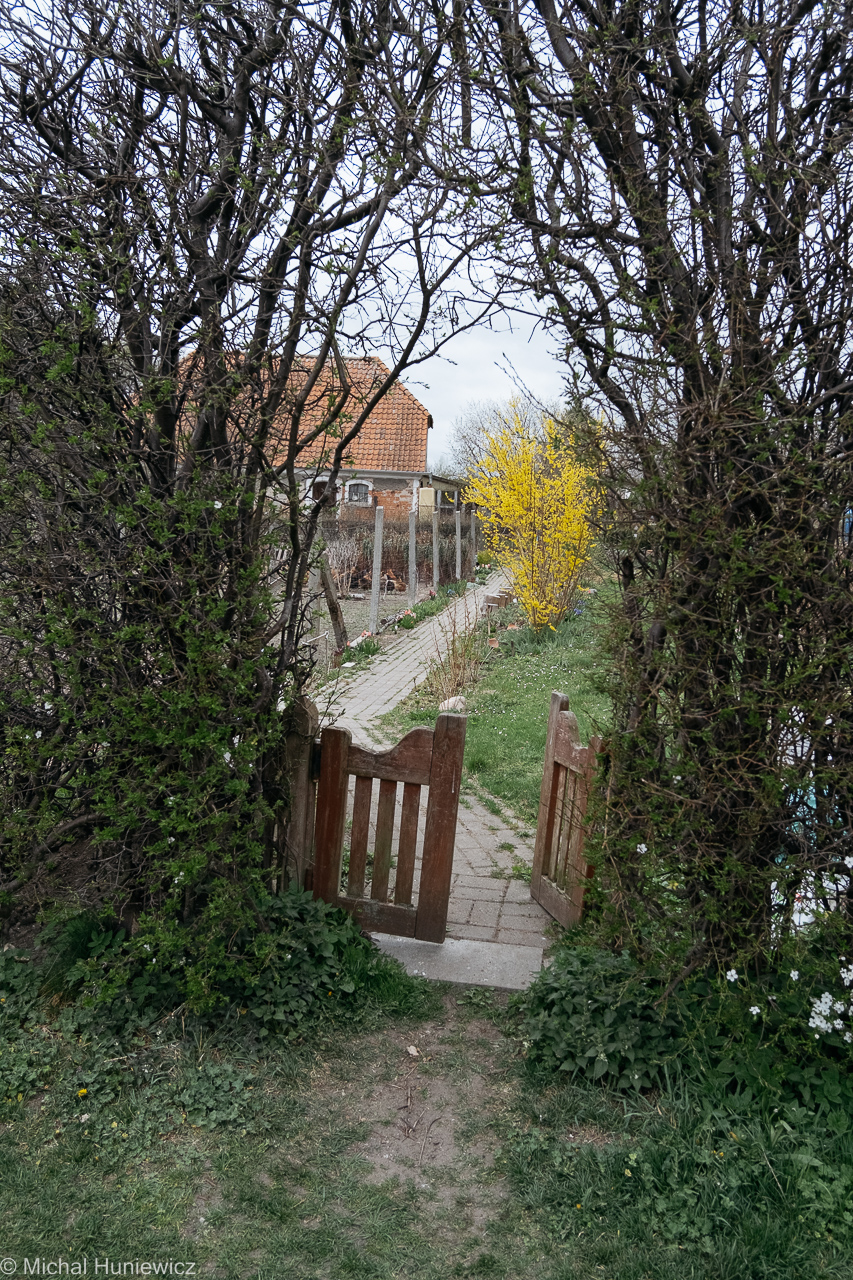
A pre-Second World War farming building beyond the gate.
ISO 640, 17mm, f/3.8, 1/850s.
Bestendorf Graveyard
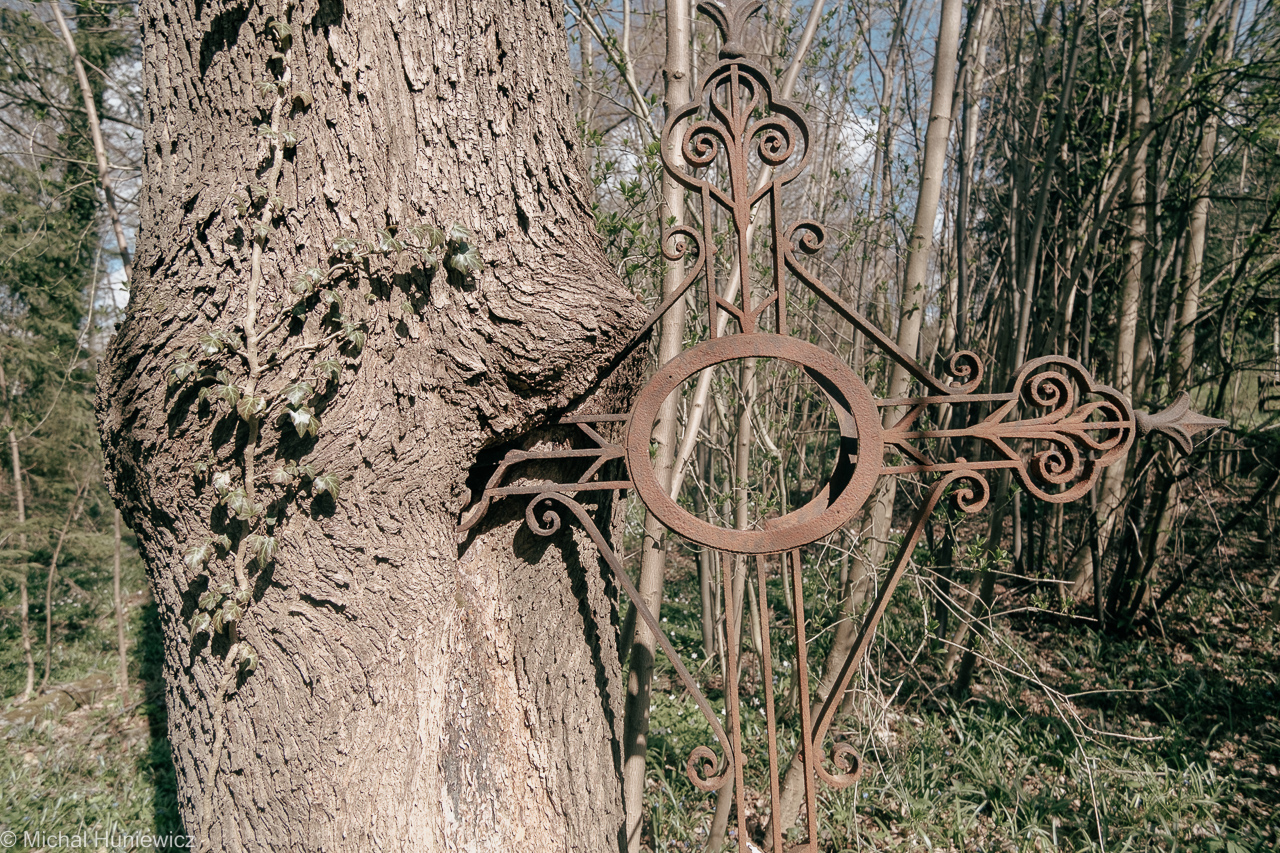
The old, German cemetery was left to fend for itself against the encroaching nature. Snowdrops still grow here.
ISO 640, 15mm, f/4.0, 1/4000s.
Downhill
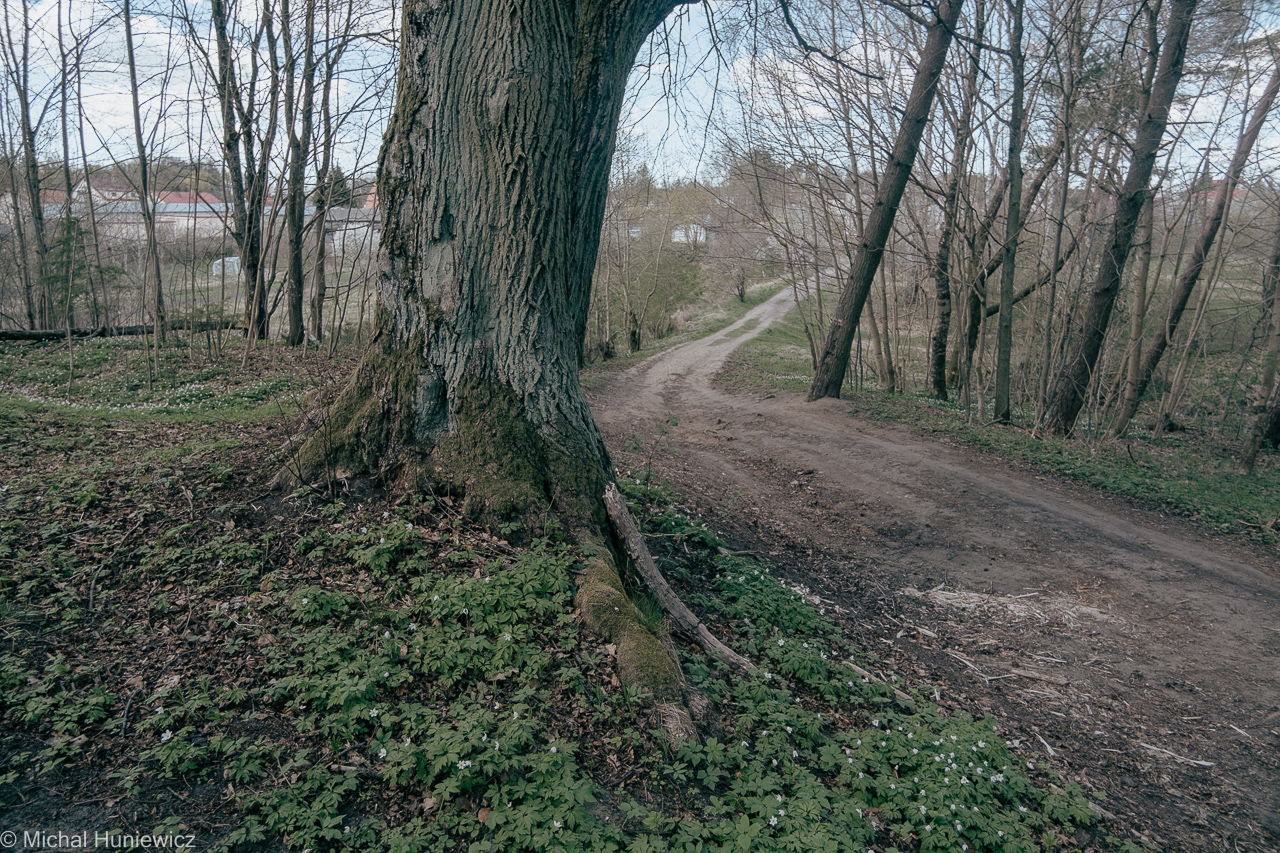
The scenic path from the church hill down to the village. Based on how well the Catholic Church in Poland has been looking after itself, I imagine fewer and fewer people will be bothered to climb this hill.
ISO 640, 15mm, f/4.0, 1/800s.
Broken Mary
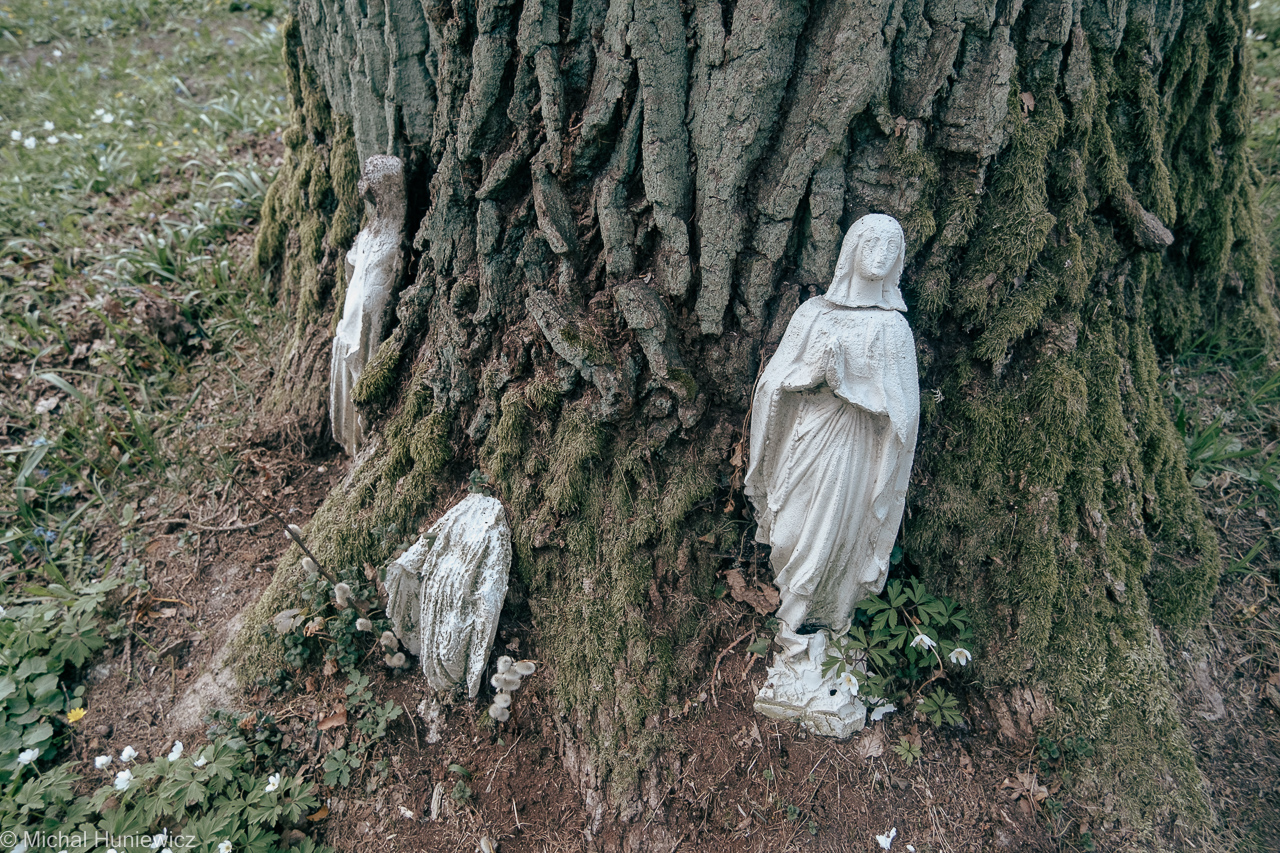
Broken figurines of Mary within the contemporary cemetery area.
ISO 640, 15mm, f/4.0, 1/320s.
Stumps
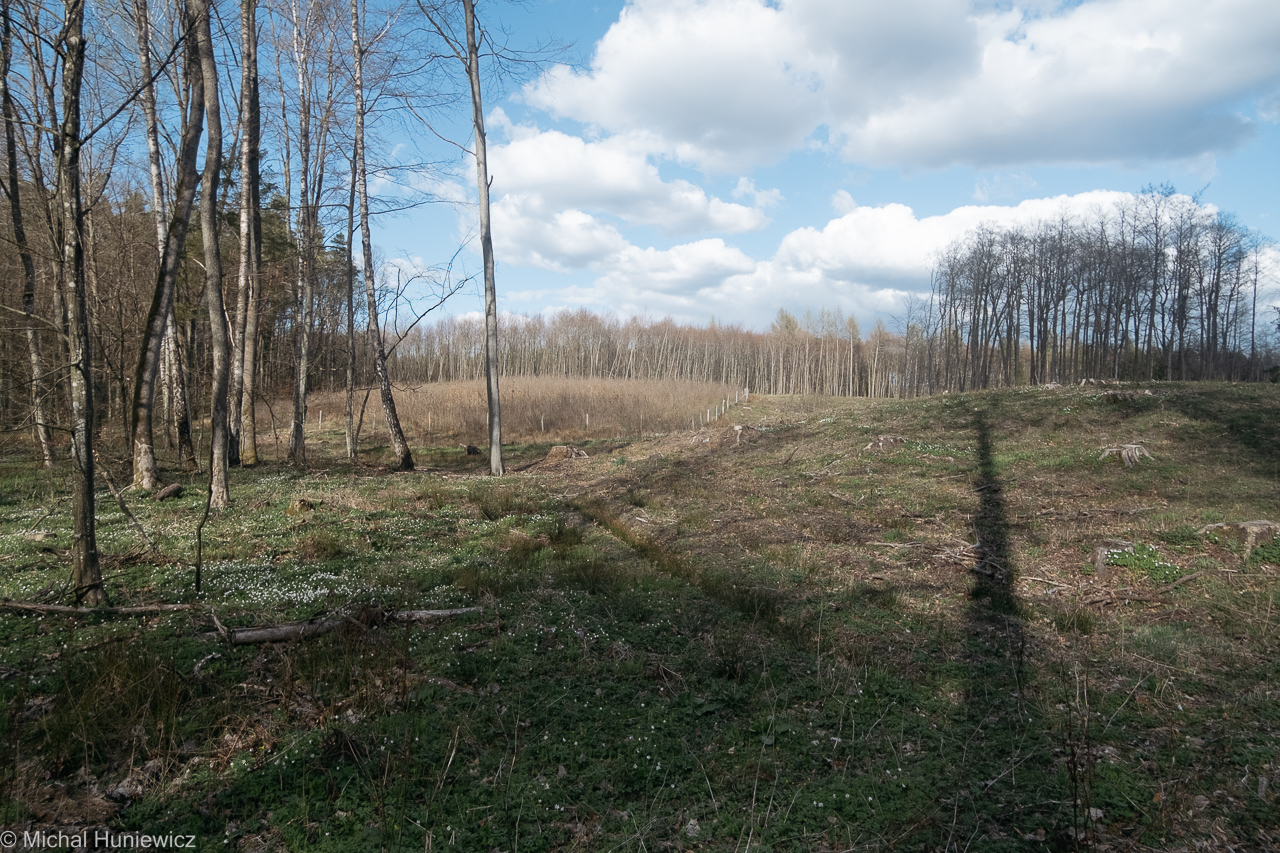
I used the occasion to search for what I called the mysterious path, a dark trail across the woods which for me back then was some sort of rite of passage, to walk it alone. To have enough courage to find out where it leads.
ISO 640, 15mm, f/4.5, 1/2400s.
Pier

But the forest had changed so much that it was an exercise in digging up distant memories, studying old satellite imagery, and patching it all together. In the evenings, we'd retire to Bogaczewo to consult the maps as well as see what else we could remember.
ISO 800, 22mm, f/6.4, 1/80s.
Fork
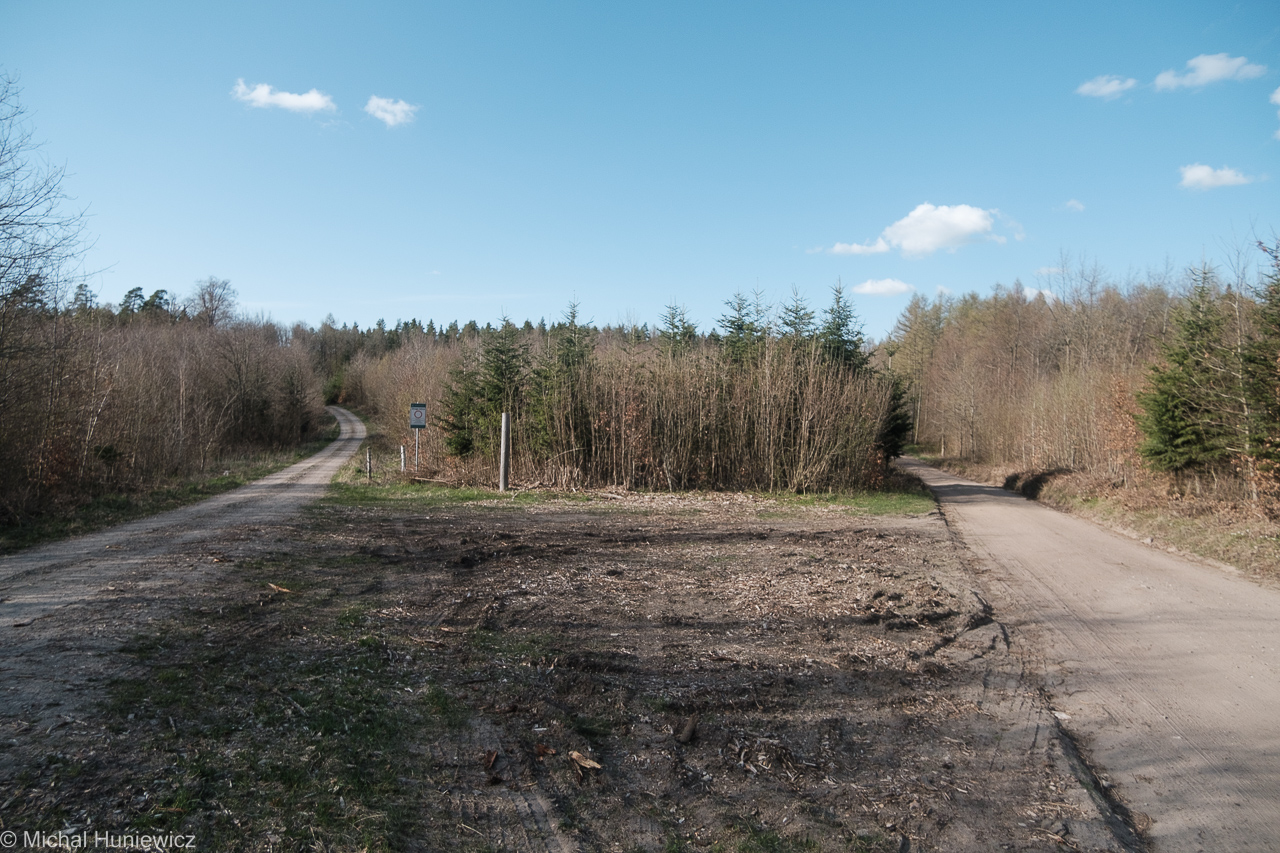
I was, eventually, successful in figuring out where the path lay. All it took was pretty much the whole aforementioned shebang: modern technology, fragmented memories, nostalgia, maps I hadn't known existed, some wine, and logic.
ISO 640, 15mm, f/4.5, 1/2500s.
The Road Goes Ever On
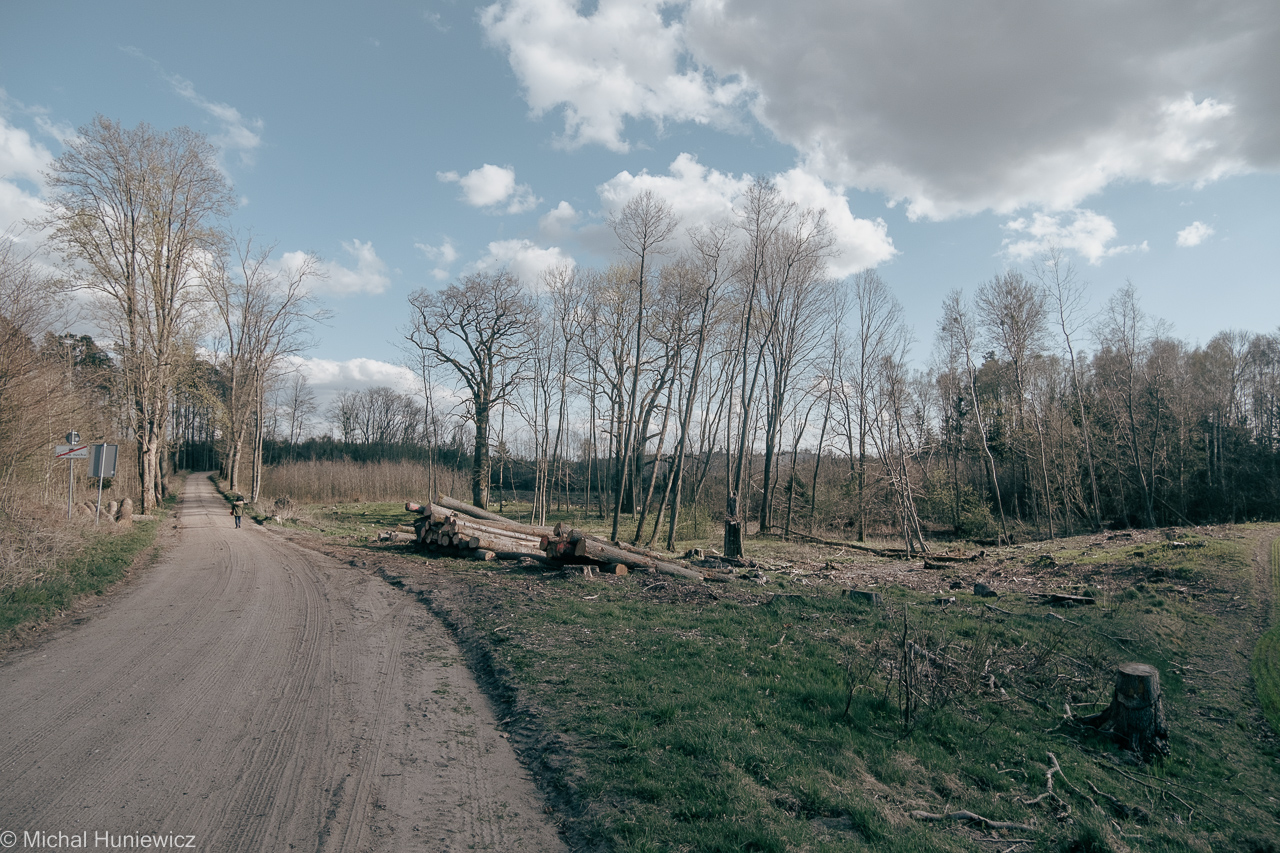
But overall, trying to re-live the past experiences proved futile, so much of the good old days vibe having crumbled away. Mysterious roads have been dotted with signs. There are no trees left to obscure.
ISO 640, 15mm, f/4.5, 1/2400s.
The Marsh
Resin
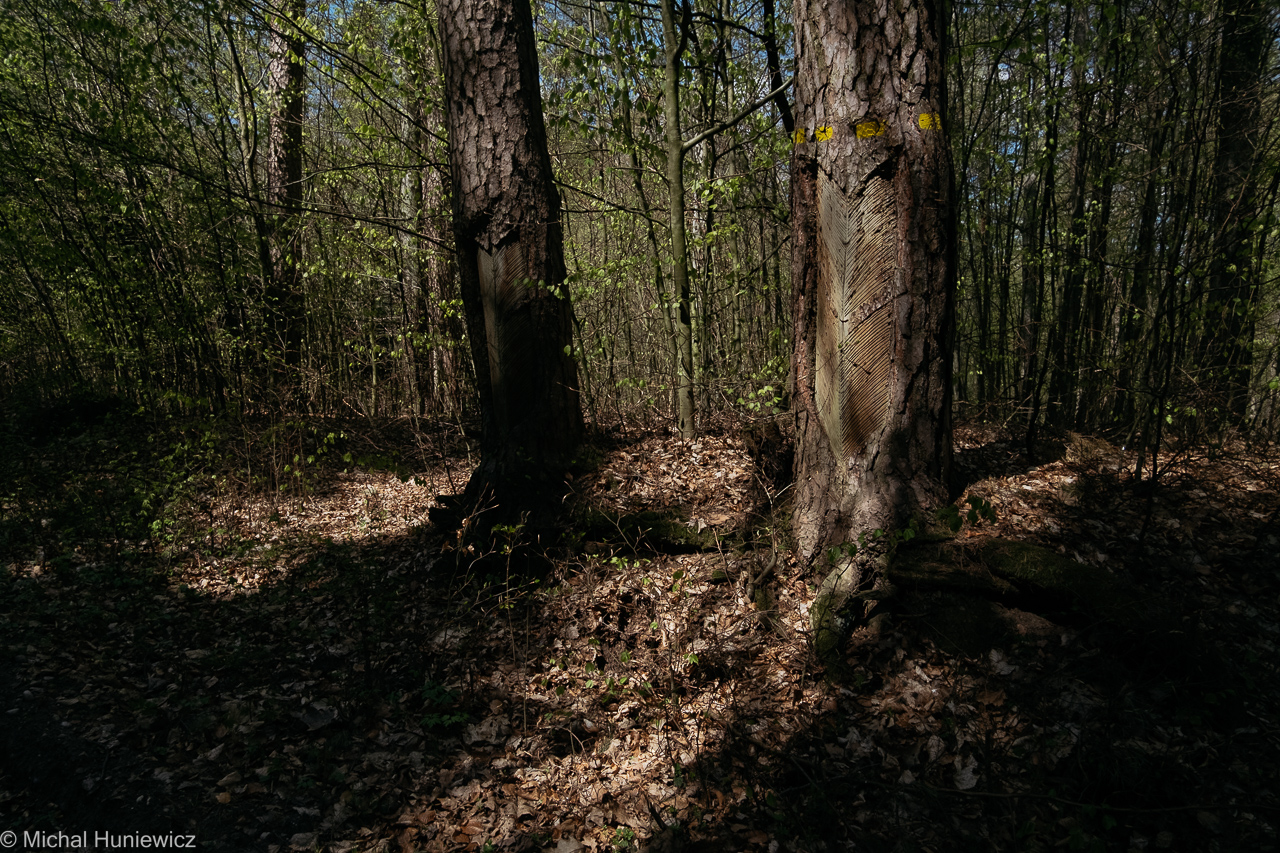
I guess that is a path for everyone to, ultimately, walk on their own, should they wish to.
Nonetheless, we welcomed the beginning of May by having a picnic in the woods, like we used to back in the days. It was pleasant enough; the weather was also good, white clouds sailing across the blue skies.
Nonetheless, we welcomed the beginning of May by having a picnic in the woods, like we used to back in the days. It was pleasant enough; the weather was also good, white clouds sailing across the blue skies.
ISO 640, 15mm, f/7.1, 1/1000s.
Ukrainian Flag
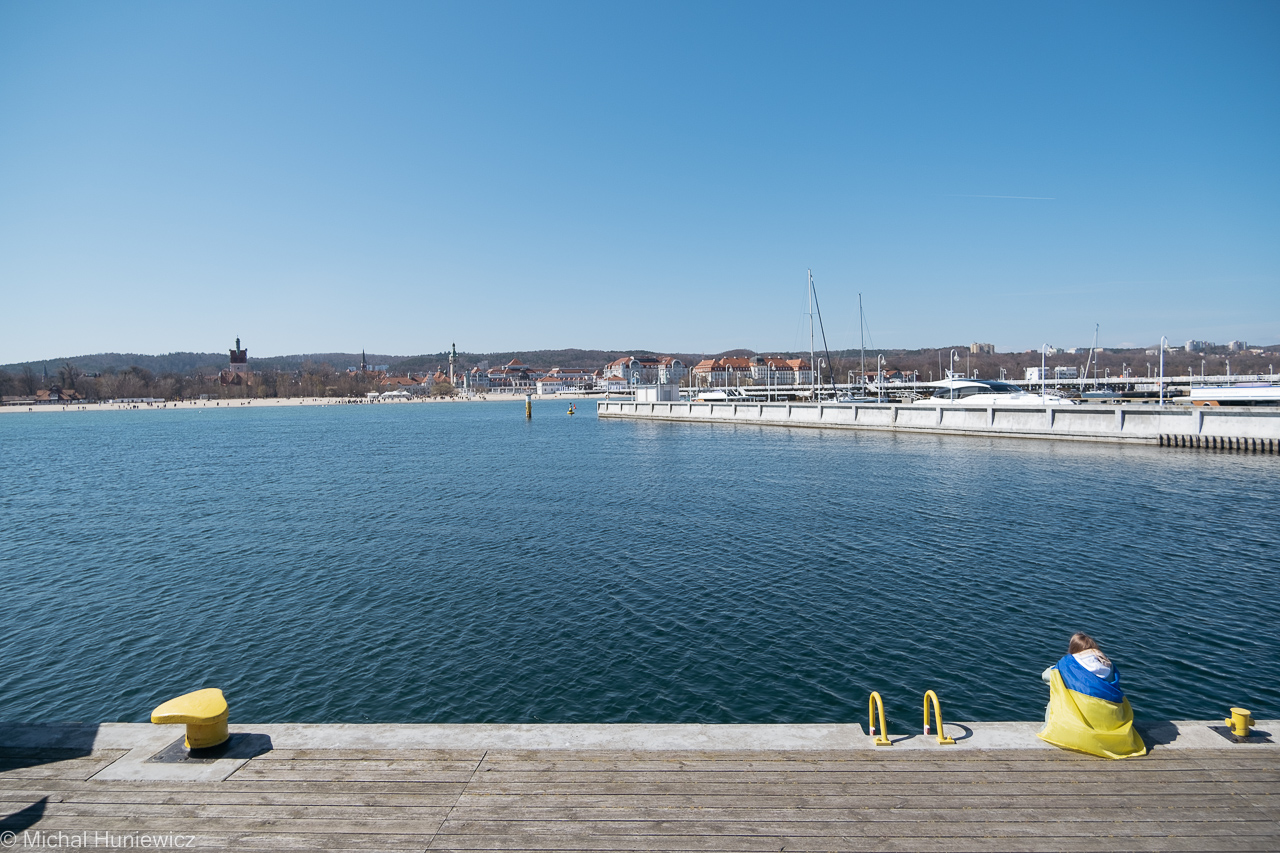
I also stayed for a while in Sopot, working remotely. It was an interesting time to visit Poland, with Ukrainian refugees everywhere. I was proud that Polish people offered them hospitality.
ISO 160, 15mm, f/3.5, 1/1700s.
